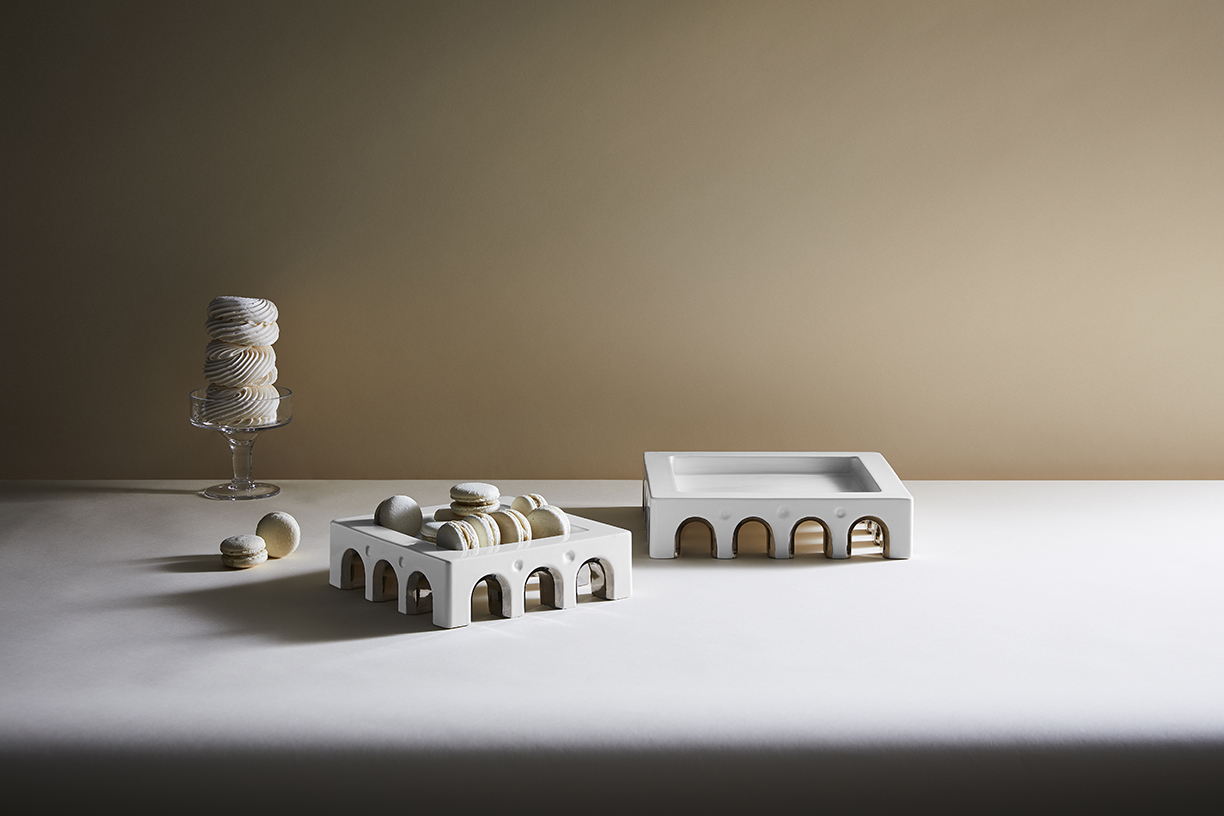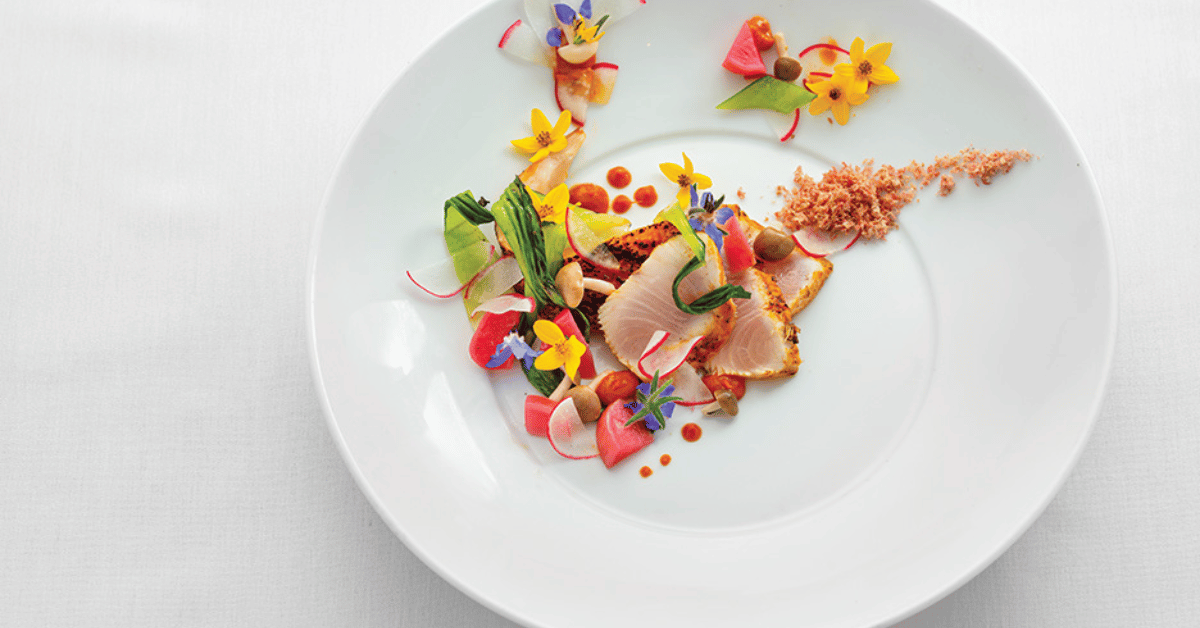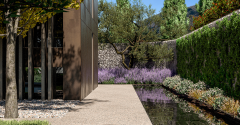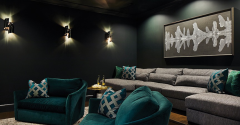While dark-colored walls can add a depth to a room, it can sometimes be tricky to style around them. Every dark-colored wall brings a heavy tone with it, and it’s important to know how to design the space so has a balanced tone. While it’s a designer’s challenge, here are different rooms that prove it can be done:
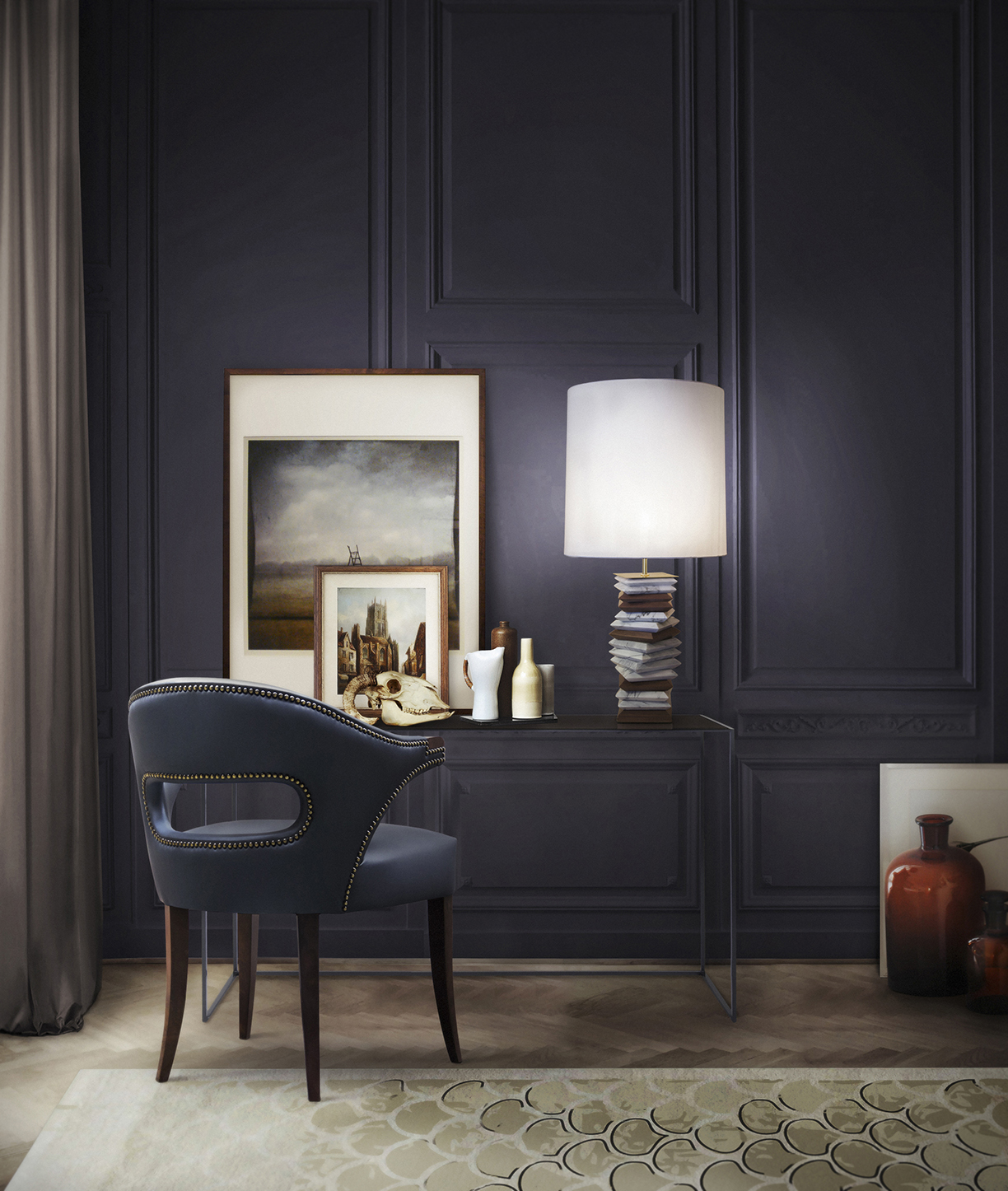
Photo courtesy of Brabbu Design Forces
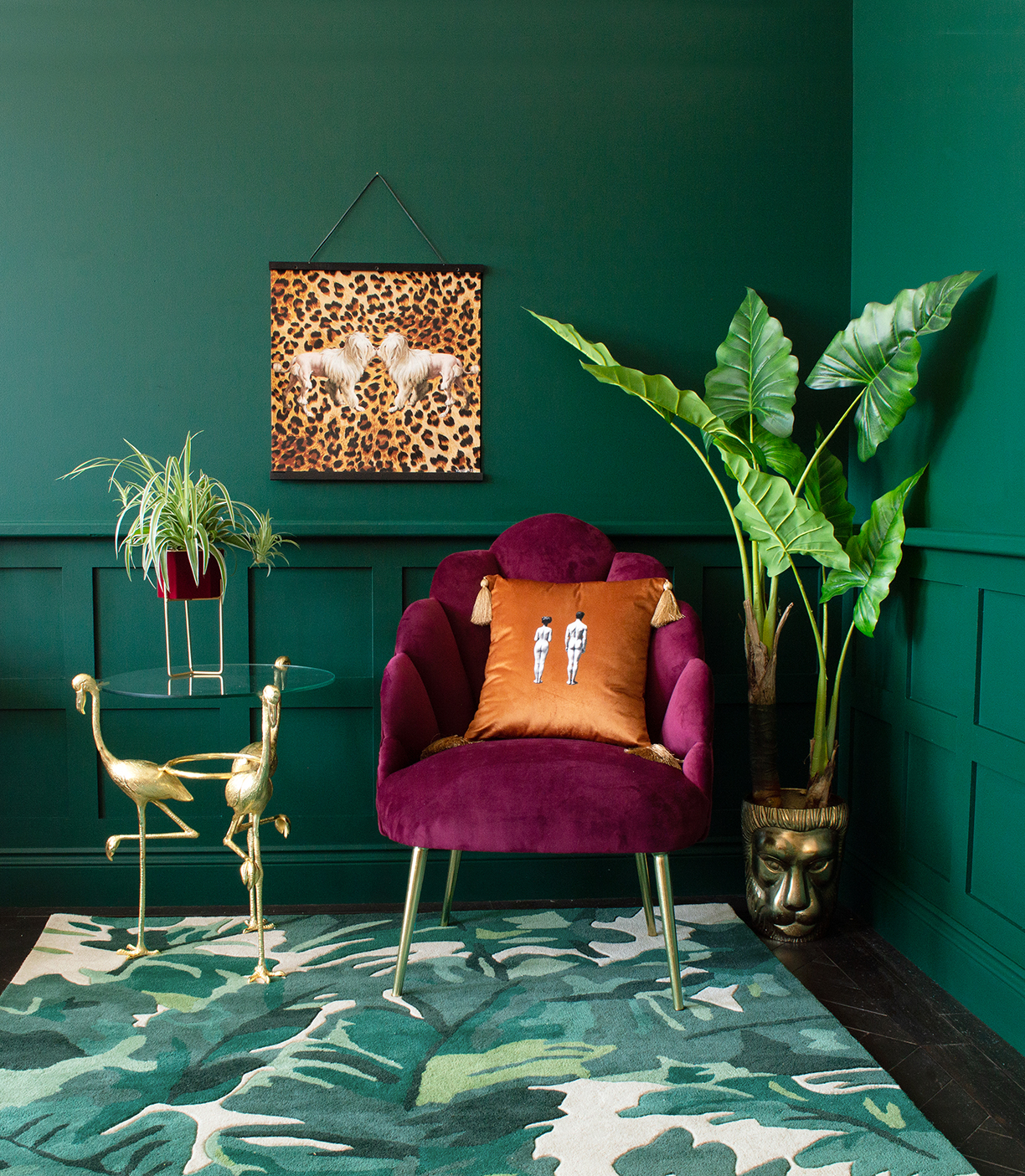
Photo courtesy of AUDENZA
1. Brighter Colors, Warmer Tones
When designing any room, it’s crucial to look at the colors you’ll be using and make sure they balance each other out. This is especially so for rooms with dark-colored walls. While they add a great tone to the space, too many darker tones can make a room feel cold and uninviting.
The perfect balance of colors involves a mixture of both darker and lighter colors, such as this bright red chair in front of a dark green backdrop. The chair adds a pop of color, making the dark colored walls feel warm and inviting.
1. Light versus Dark
Balancing the lighter and darker tones can be a challenge, since having too much of one can overwhelm and wash out the other. These baths represent the perfect balance of tones. The darker walls counteract against the polished bathtubs and light fixtures. This not only adds a great balance, but brings a rich and inviting depth of color to the room.
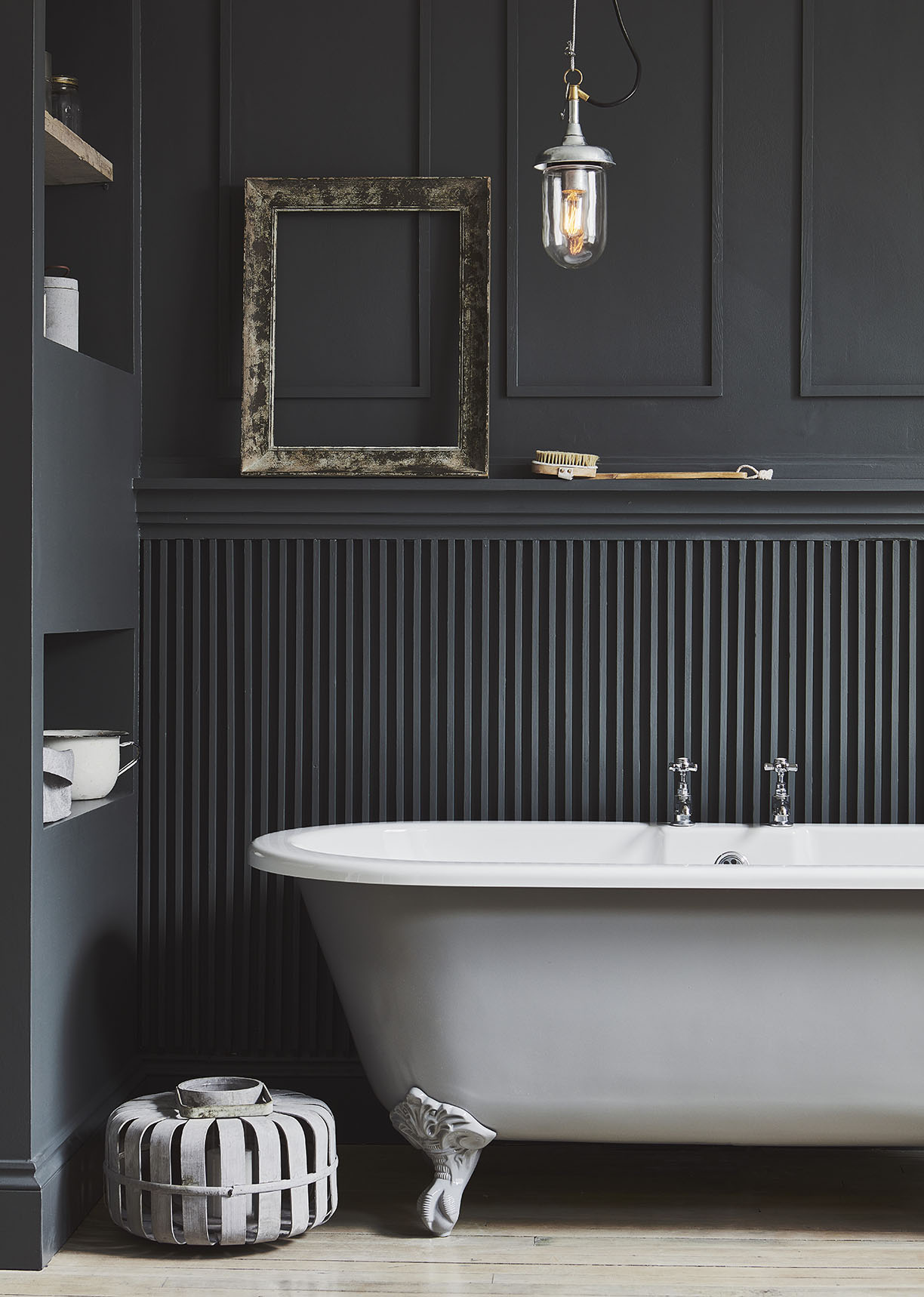
Photo courtesy of Garden Trading
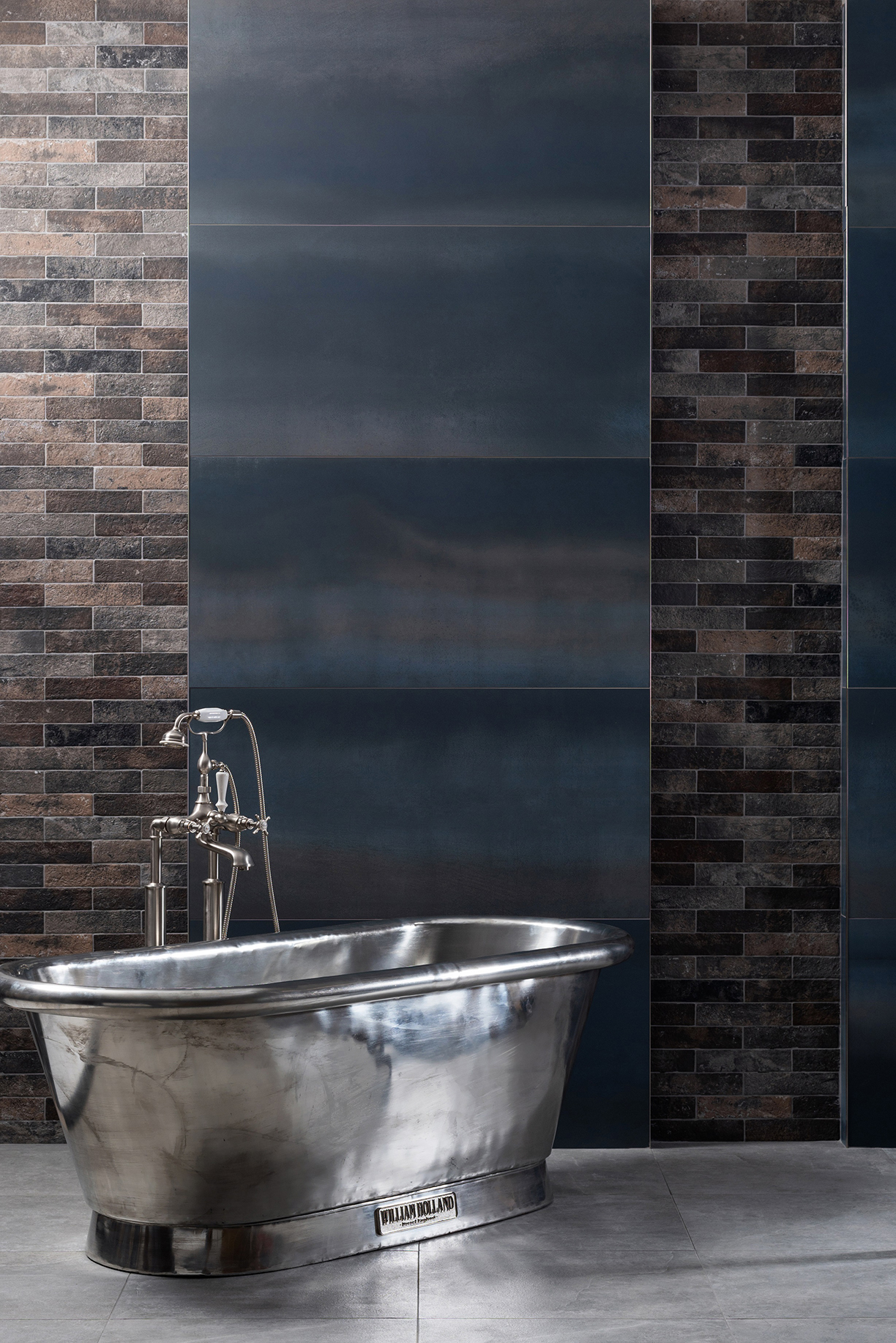
Photo courtesy of Original Style
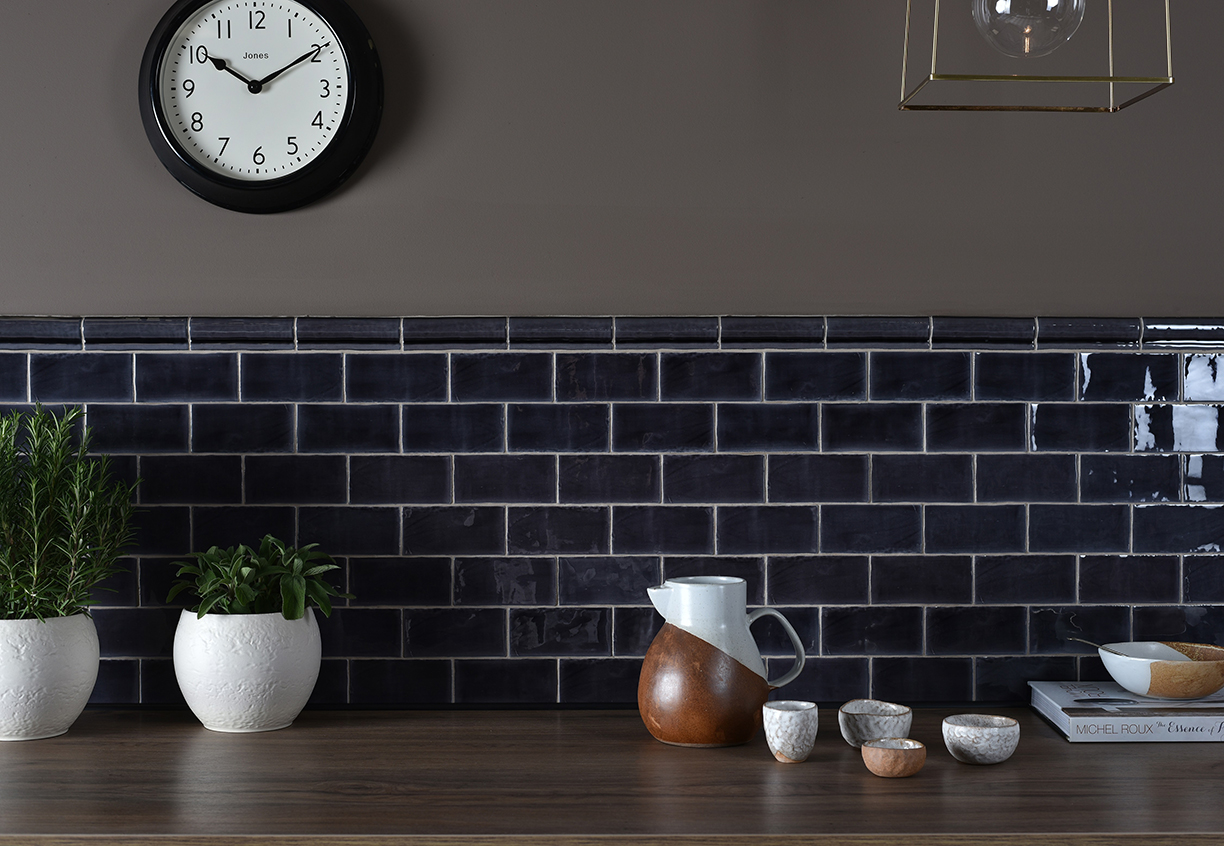
Photo courtesy of Original Style
3. Allowing Tones to Stand Out
When it comes to dark-colored walls, an immediate response may be to counteract the heavier tones with lighter statement pieces. While this can create a beautiful design, it’s important to allow the rich, dark colors to stand out. In this kitchen, there are minimal pieces that are lighter in color, allowing the walls to be full in color and provide a warm and cozy atmosphere.
High ceilings have become a statement piece in homes and apartments across the nation, and buyers have responded. The National Association of Home Builders conducted a survey in which 67 percent of respondents in 2018 said they would be willing to pay more money for ceilings higher than 8 feet on the first floor of their home — and with the percentage steadily increasing over the past few years, it’s clear that high ceilings are a great addition to any home.
With so many different benefits, high ceilings can become the selling-point of the home. Here are some benefits involved with designing a home around high ceilings:
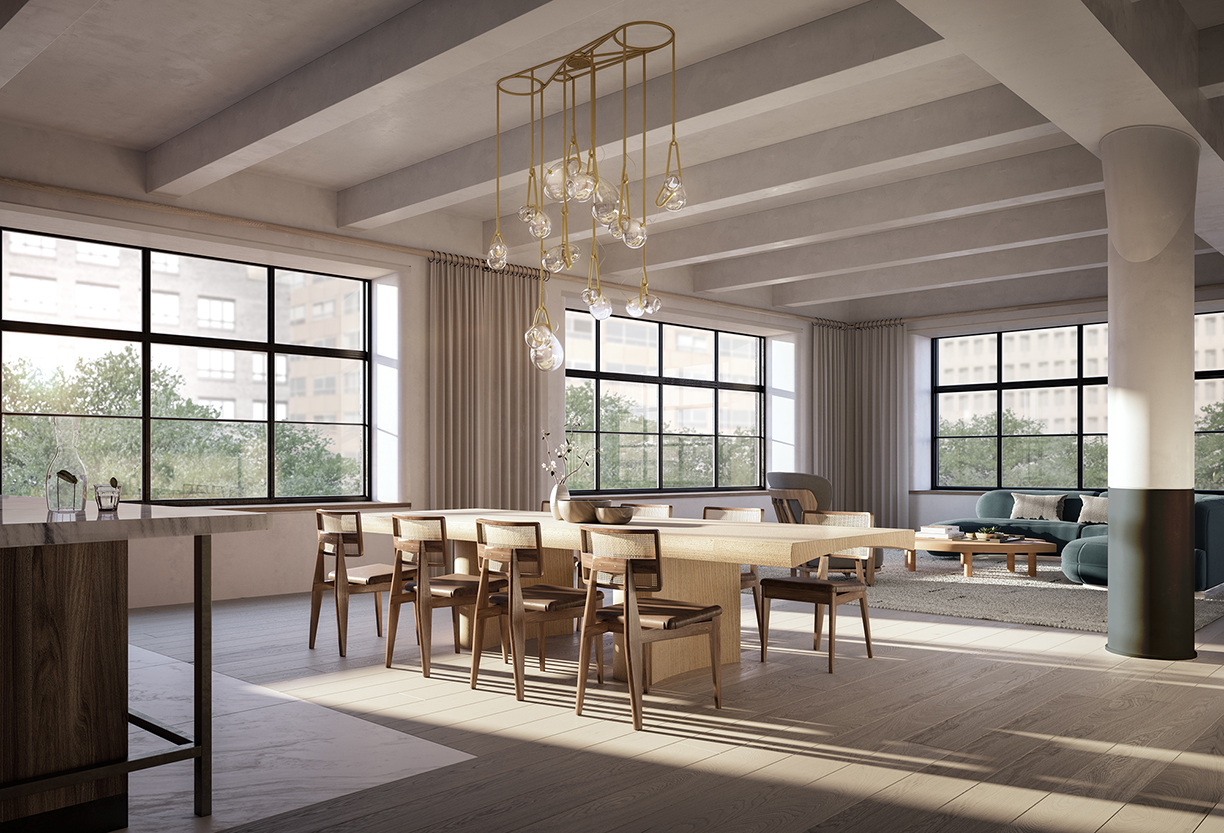
Photo courtesy of 90 Morton
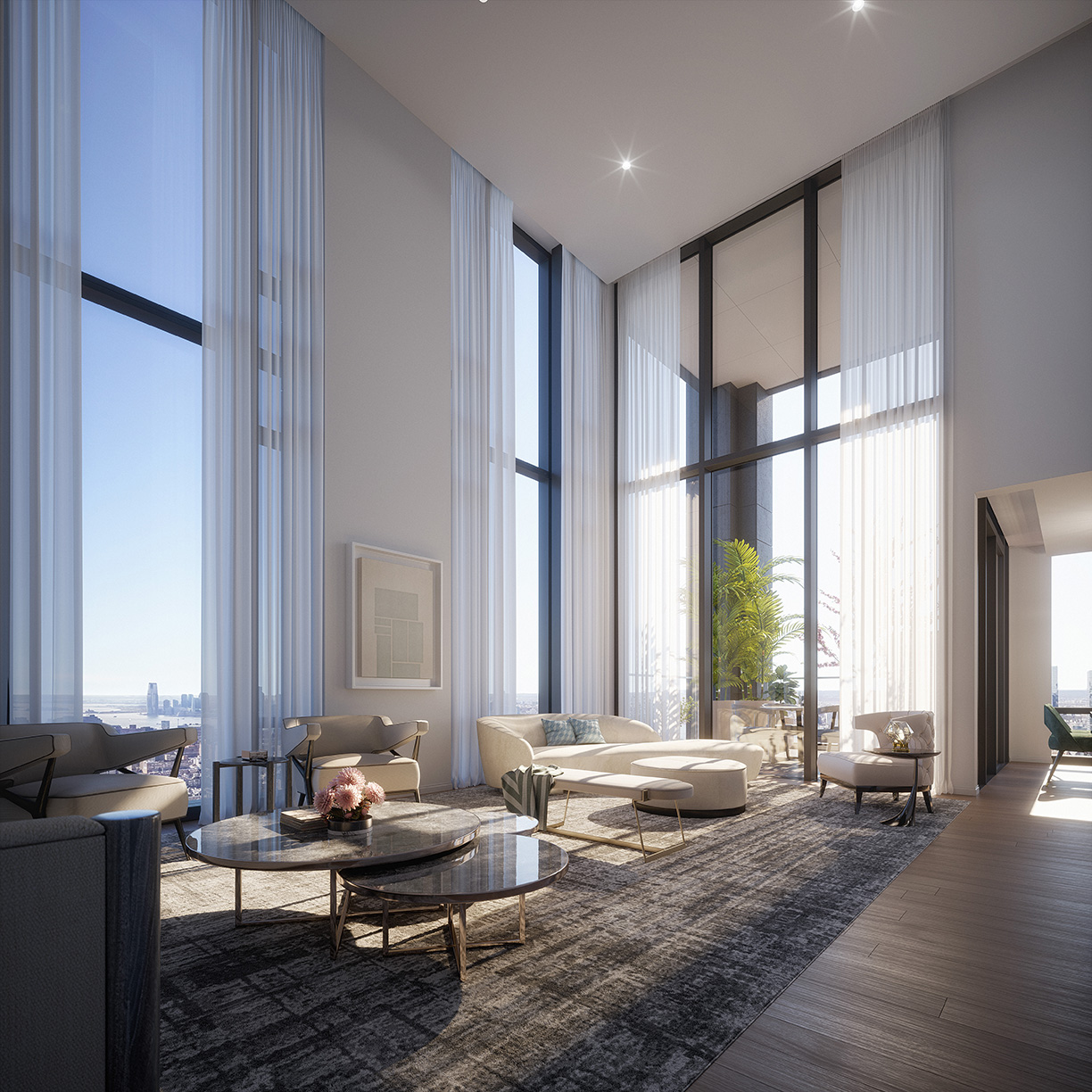
Photo courtesy of THREE MARKS
1. More Space
By adding more vertical space, high ceilings offer a spacious atmosphere for the individual to live in. The additional space adds a grander feel to the room, elevating the standard of luxury homes.
At 277 Fifth Avenue in New York City, the 13.5-foot ceilings provide a sense of grandeur and elegance, bringing an elevated sense of luxury to the residence. The light and airy curtains hanging from the top provide a sleek and stylish addition to the grand floor-to-ceiling windows.
1. Dazzling Views
In apartments and residential homes across the country, high ceilings can allow for even more windows, and therefore add spectacular views. With the potential of higher ceilings, floor-to-ceiling windows can provide spectacular views of the landscape before them.
At Summit New York, a private residential building located in the heart of Midtown Manhattan, the 15-foot ceilings allow for gorgeous views of the Chrysler building with the rest of the city in the background. The sheer height of the ceilings allows for a larger view, adding a dazzling feature to the home.
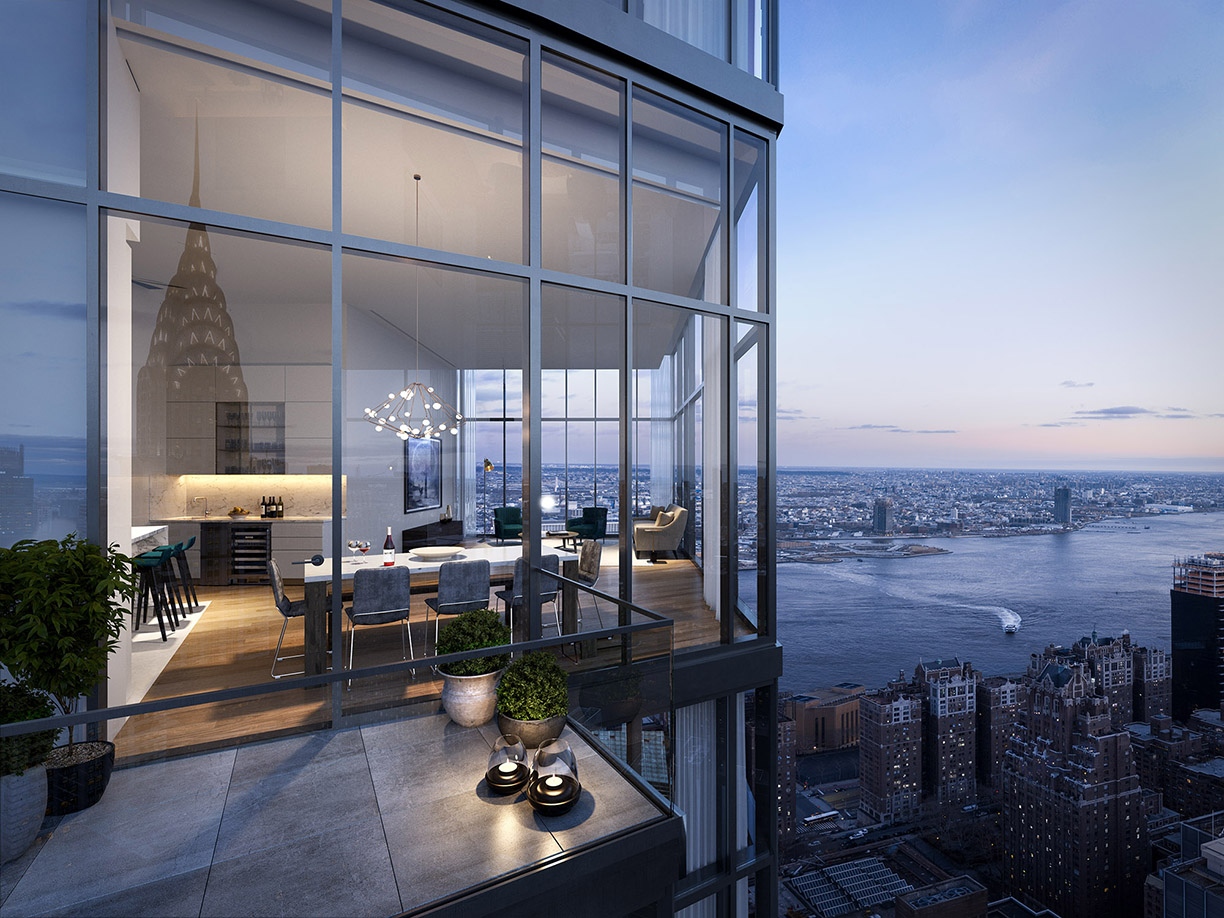
Photo courtesy of Summit New York
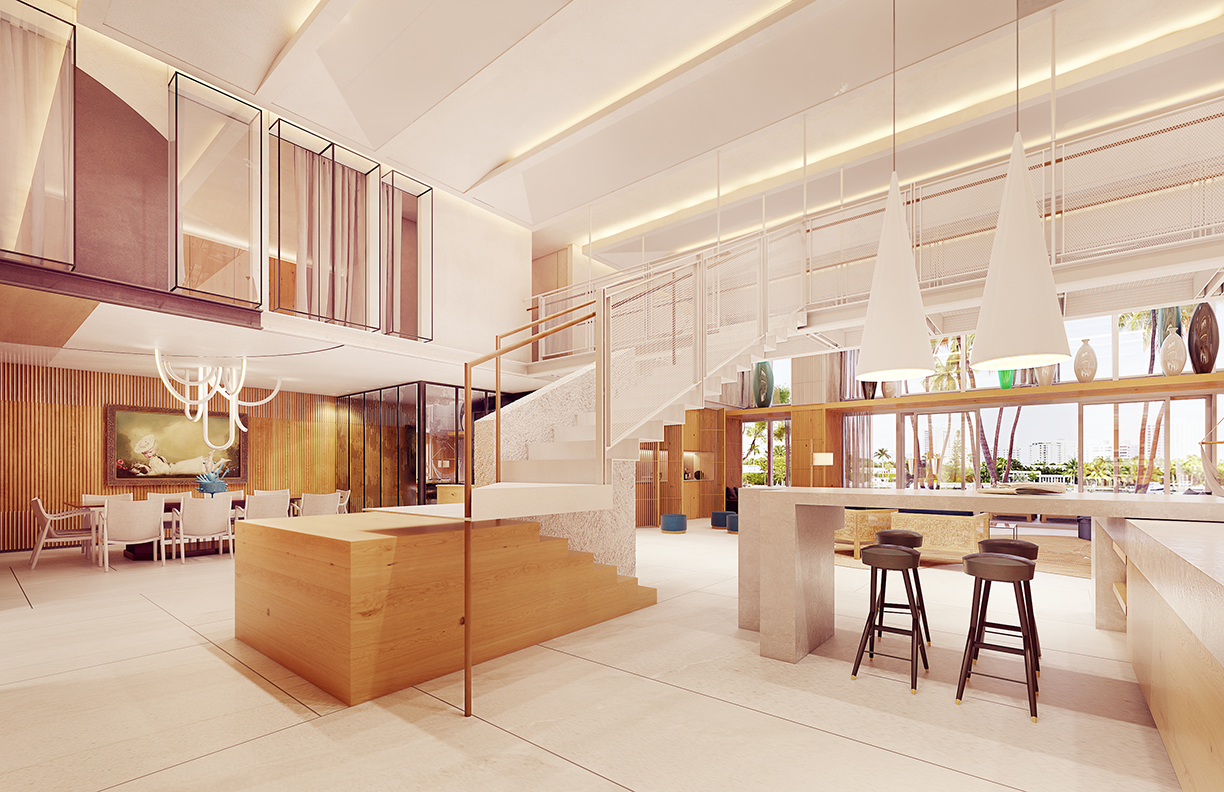
Photo courtesy of DooArchitecture
1. Creative Design
Although high ceilings include great benefits just by themselves, they also have added benefits for interior designers everywhere. Higher ceilings allow interior and architectural designers to get creative with the space they have available to them. Rather than creating a simple, high ceiling, designers have used their creativity to create spectacular pieces that can be the centerpiece of the space.
By using different materials and an eye-catching design, the designers have created a statement piece in the Ritz-Carlton Residences in Miami, Florida. They not only add a spacious and airy feel to the room, but its design allows for an artistic interpretation of the classic high ceiling.
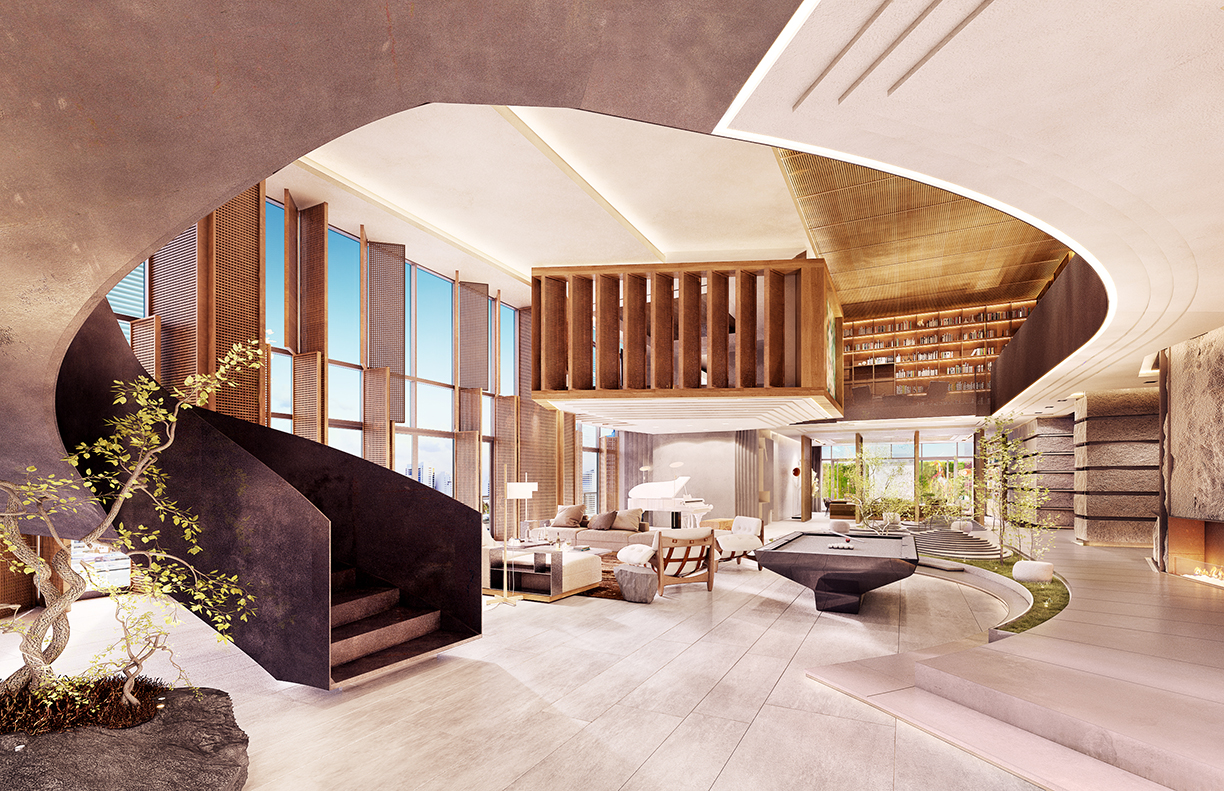
Photo courtesy of DooArchitecture
1. Wellness-Booster
Adding natural light and creating an uncluttered, airy atmosphere, high ceilings with tall windows can increase the wellness of the individual. And with wellness becoming a hot topic in the industry, high ceilings and tall windows can become the selling-point of the home. By 2017, the wellness industry was worth $4.2 trillion, according to the Global Wellness Institute — a jump of 12.8 percent from 2015. And as the industry’s worth only increases, higher, grander ceilings have the potential to be a decisive element to the home.
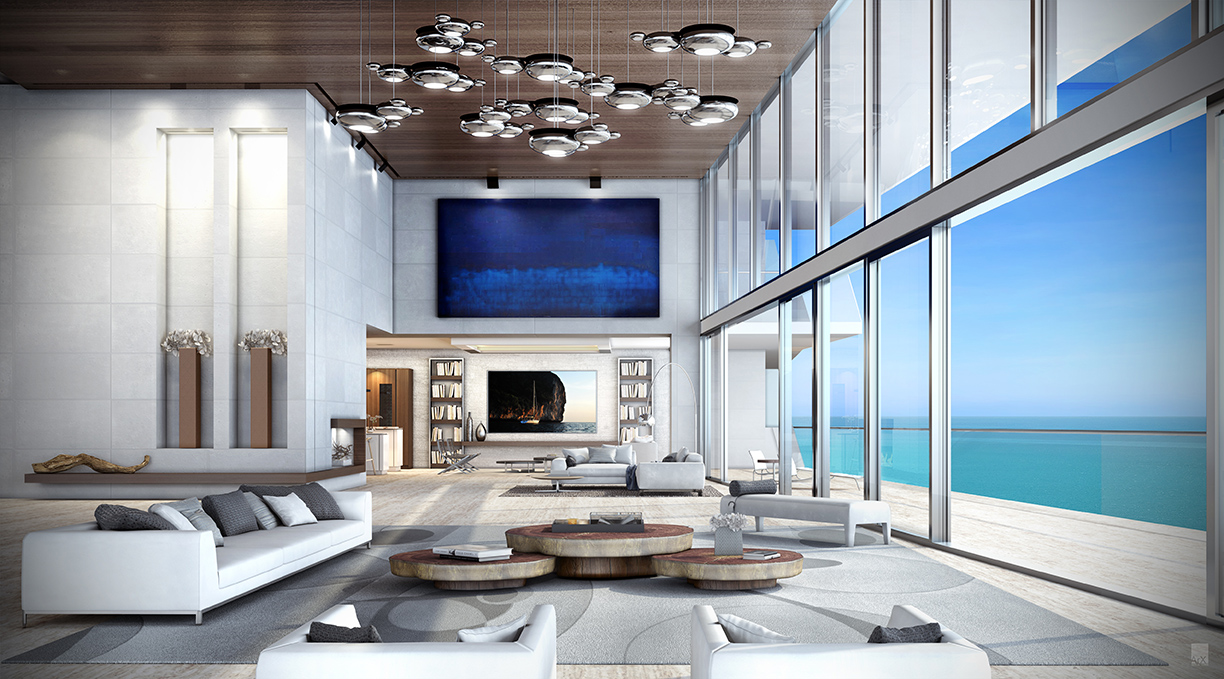
Photo courtesy of Turnberry Ocean Club
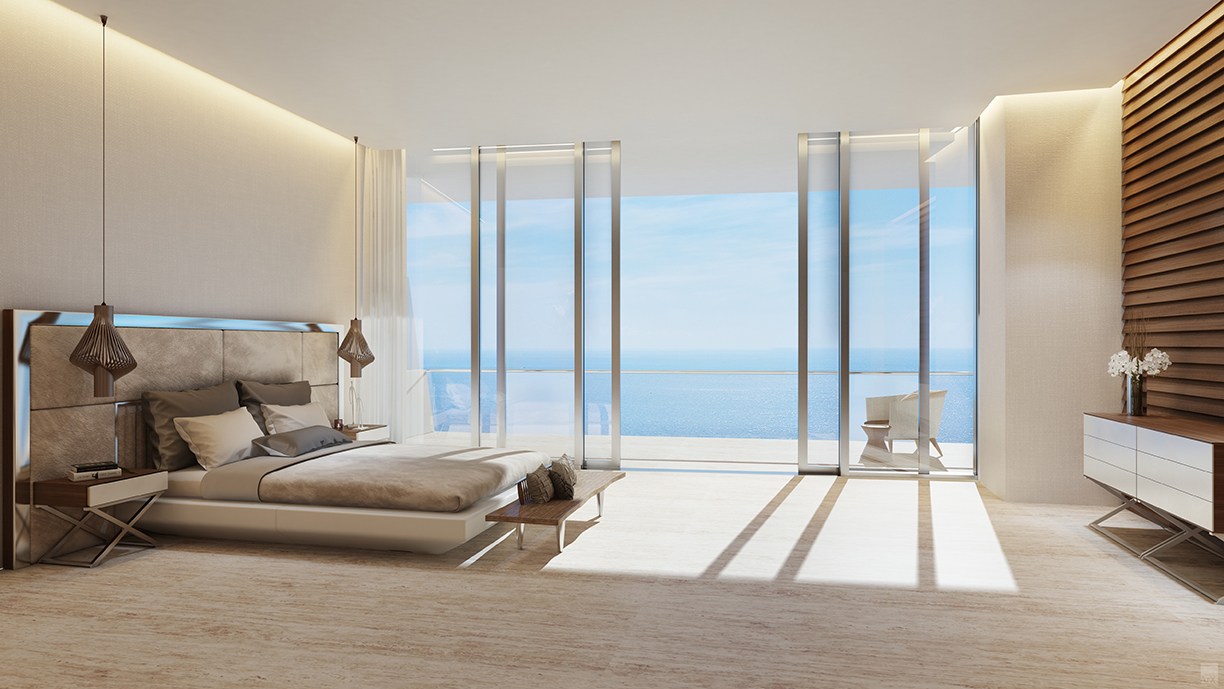
Photo courtesy of Turnberry Ocean Club
By creating a warm and inviting atmosphere, the fireplace can always become the centerpiece of the home. With so many different styles, however, it is becoming increasingly difficult to make decisions based on the look of the room. Here are different styles that can be used to complement your own personality and the atmosphere of the overall home.
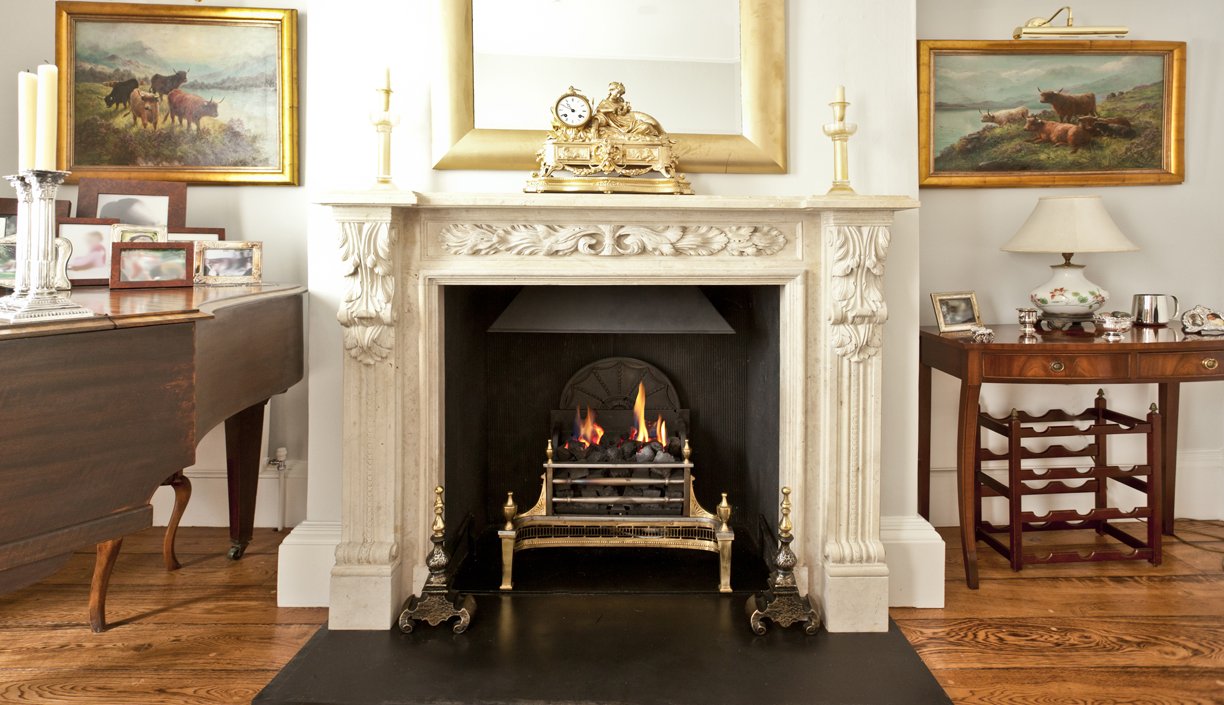
Photo courtesy of THE OLD CINEMA
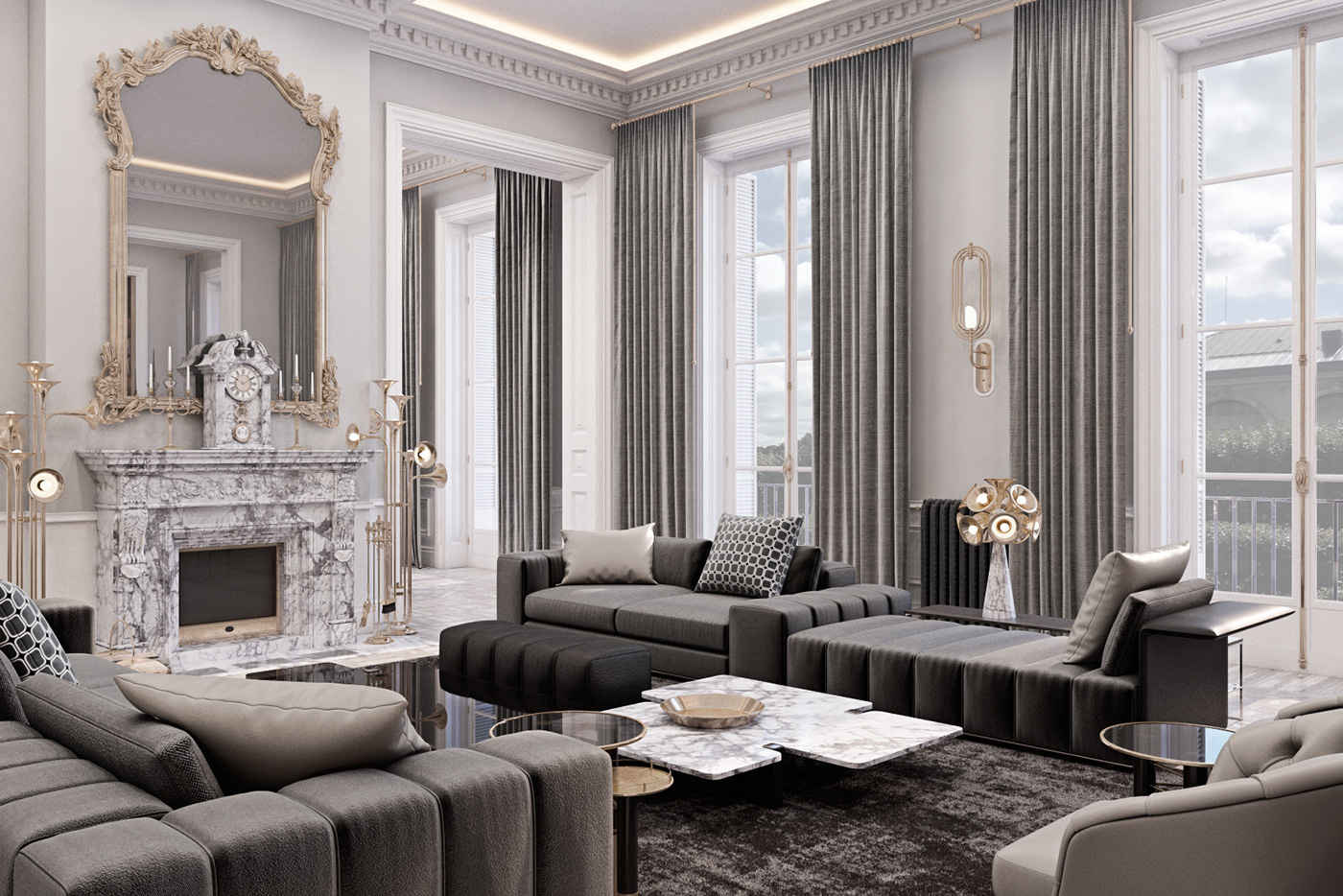
Photo courtesy of DelightFULL
1. The Classic Grand Fireplace
For a more refined look, the grand fireplace will do just the trick. The gray and white colors in this living room add to the polished atmosphere, bringing luxury to the forefront of the space.
If the style of the home is more traditional and elegant, this is the perfect fireplace for any room. Although it will blend in with the character of the rest of the home, it can still be grand enough to catch your eye. With its intricate detail and sheer size, it is certain to be the masterpiece of any home.
2. The Simple and Sophisticated Fireplace
If you’re looking for a fireplace that warms the atmosphere without taking away from other statement pieces in the room, head in the direction of a simpler, sleek fireplace for your home.
For a more sophisticated style that blends into the background, look toward matching the color of the fireplace with the dominant colors of the room. Tans and light greens dominate the following space, with the chandelier in the center being the main statement piece of the room. To avoid taking your attention off of the chandelier, allow the fireplace to blend seamlessly into the rest of the room.
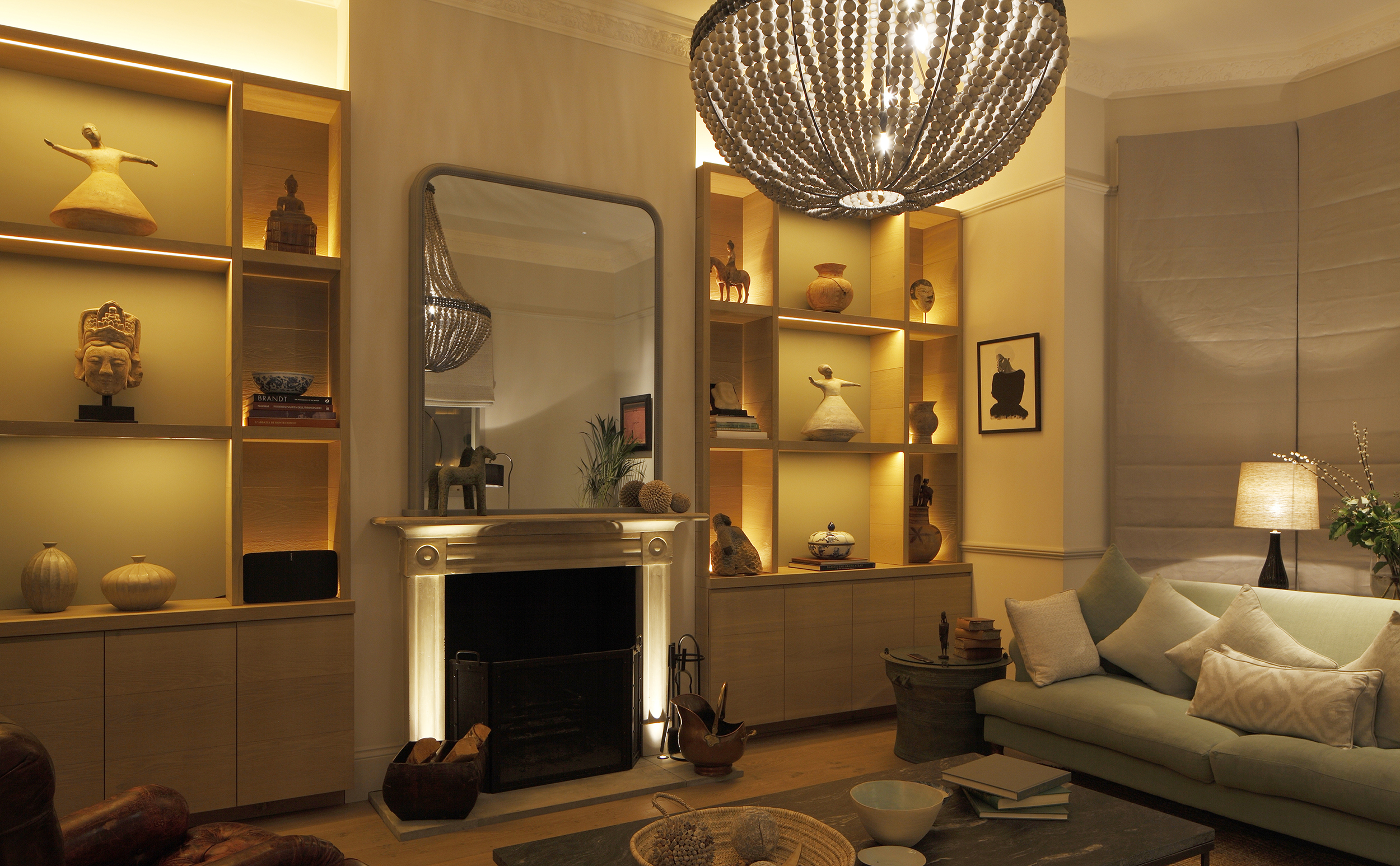
Photo courtesy of John Cullen Lighting
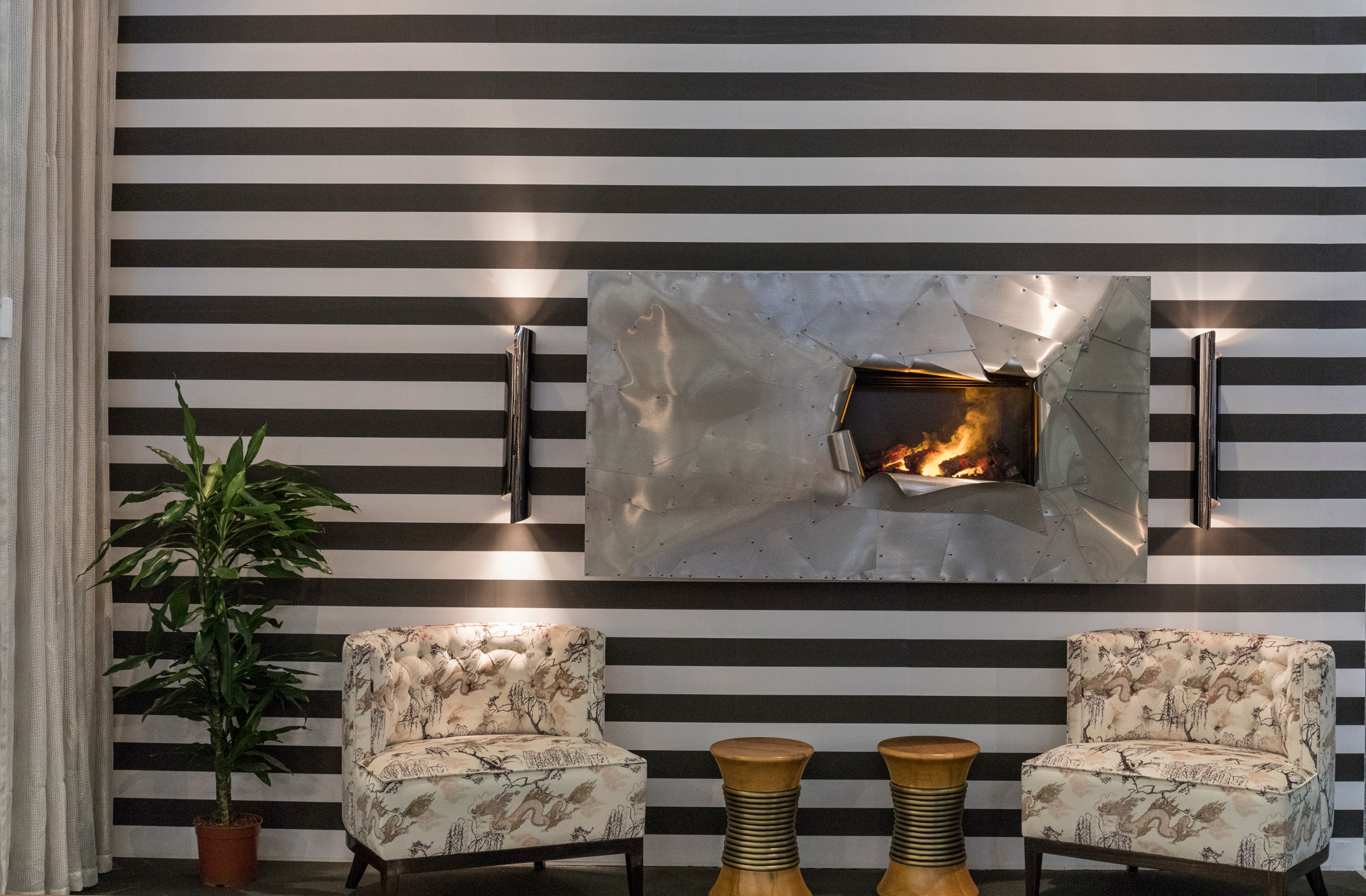
Photo courtesy of Brabbu Design Forces
4. The Avant-Garde Fireplace
For the more eclectic, a fireplace can also become a piece of art. Instead of a simple or elegant design, tough material such as metal and less-common designs can add the perfect conversation piece to any room.
This fireplace in this living room adds a bold style that is not just a functional piece of the home, but a work of art in it of itself. The layers of metal that are perceived to have been peeled back to open up the fireplace, which adds a unique addition to the piece. With a bold wallpaper in the background and dramatic lighting, this style is for the most creative and eclectic individual.
3. The Space-Saver Fireplace
For those who live in apartments or are simply looking to save a bit more space, don’t rule out the possibility of having a fireplace in your home. For a more eclectic style while also saving space, look toward the stove fireplace. This style blends seamlessly into older-style apartments or spaces, and can add a pop of old-world flair to more modern rooms as well.

Photo courtesy of Ludlow Stoves
While the warm weather is slowly coming to a close in most of the country, greenhouses and conservatories are great for any type of weather. Both can add a beautiful, unique addition to any home — but what’s the difference, and how do you decide between the two?
While greenhouses are primarily meant to grow plants in a climate-controlled space, a conservatory is meant to be more of a living space where plants can grow in the same area. Here’s how to decide which would be better for your home:
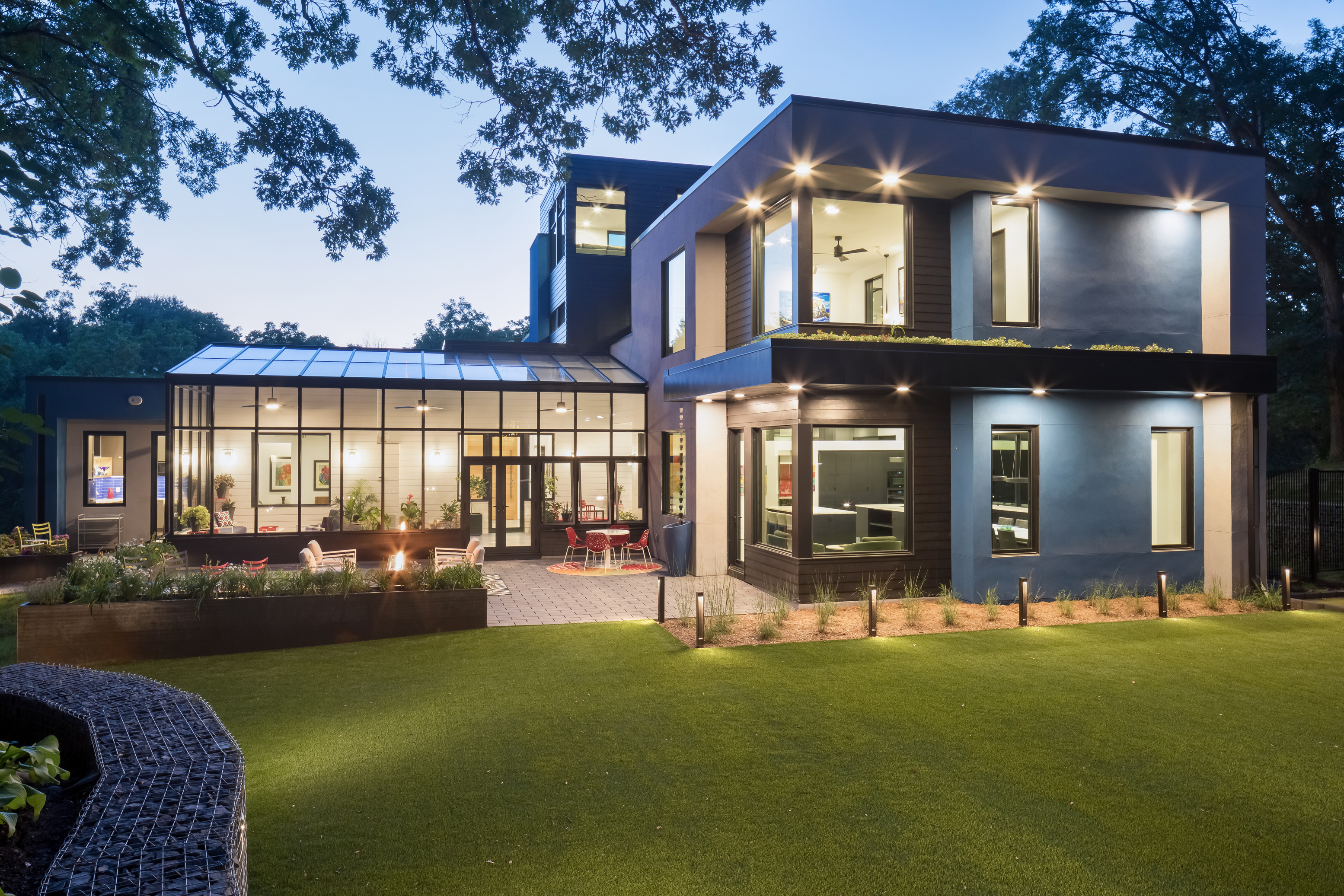
Photo courtesy of Conservatory Craftsmen

Photo courtesy of Conservatory Craftsmen
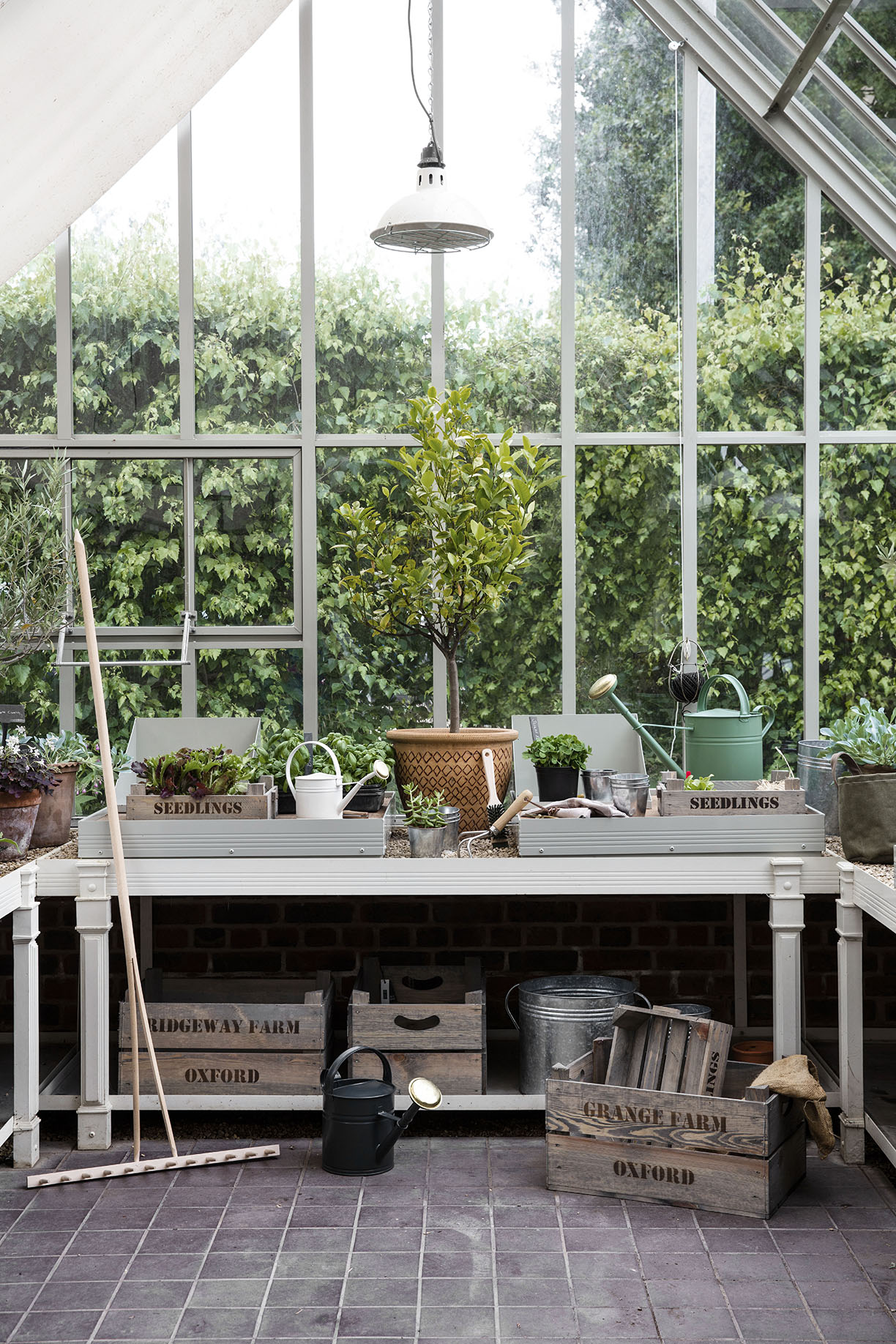
Photo courtesy of Garden Trading
1. Use of Space
If you’re looking for extra living space in the home, a conservatory would work better. Add couches and benches for comfortable seating in a relaxed atmosphere. The glass walls allow in the much-needed light to create the bright, refreshing atmosphere for you to relax in.
If you’re interested in cultivating plants and produce, a greenhouse is a better fit. While it won’t add another seating area to your home, it will contribute to the uniqueness of the home allow those who love gardening to continue their hobby all year round.
2. What are Your Hobbies?
For the green thumb, adding a greenhouse to the home is always a step in the right direction. The main purpose for the area is to cultivate plants regardless of the weather outside, which will keep the hobby alive during all seasons of the year. Used solely for growing plants, it’s important to understand the commitment involved with keeping a greenhouse alive. The space requires upkeep, which may only be enjoyable for someone who loves gardening.
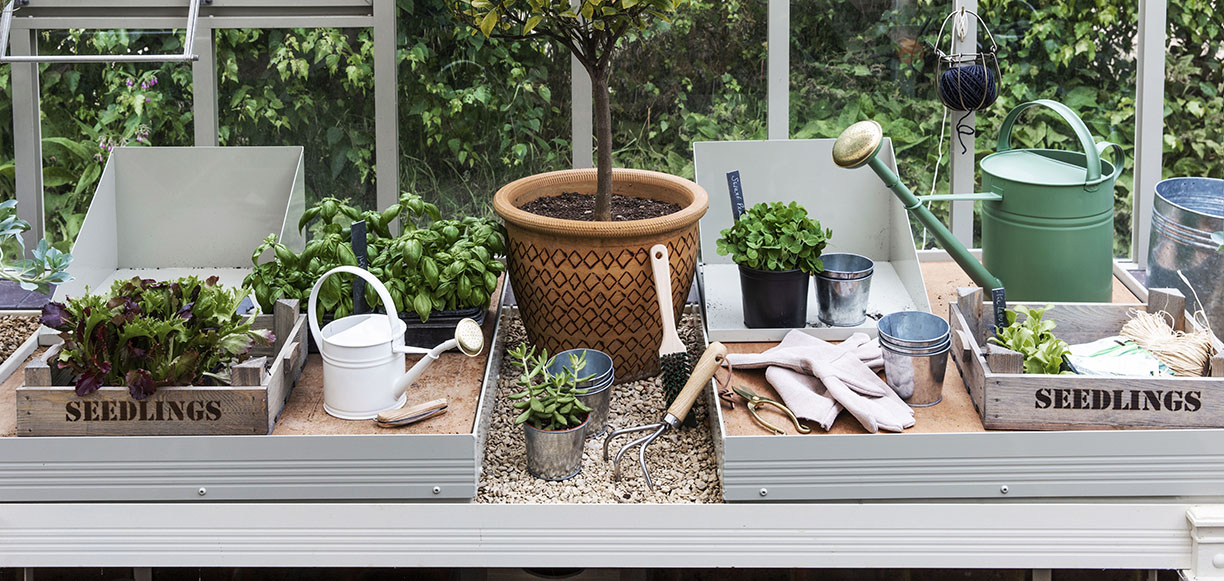
Photo courtesy of Garden Trading
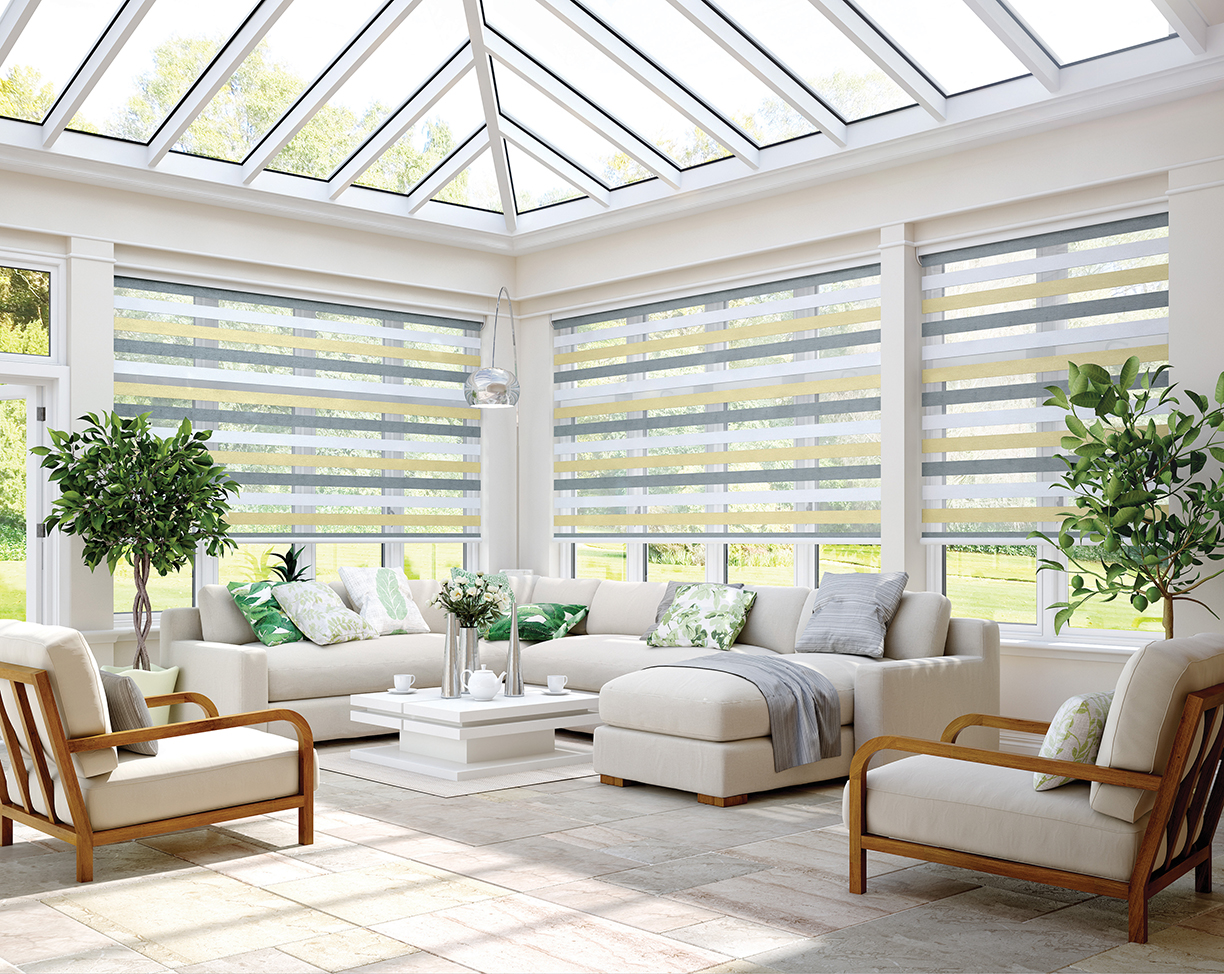
Photo courtesy of English Blinds
For the person who likes to read and relax more than garden, a conservatory might be a better fit. While still allowing the individual to connect with nature, they don’t have to be as involved as a greenhouse owner would.
3. Atmosphere is Everything
The atmosphere in a greenhouse would be much different than in a conservatory. Look toward a greenhouse if a more nature-oriented atmosphere centered on gardening is desired.
Meanwhile, a conservatory will have a more finished and refined atmosphere with its furnishings. While still oriented around nature and the plants it holds, it is much less involved in the gardening process and therefore has a more polished atmosphere than a greenhouse.
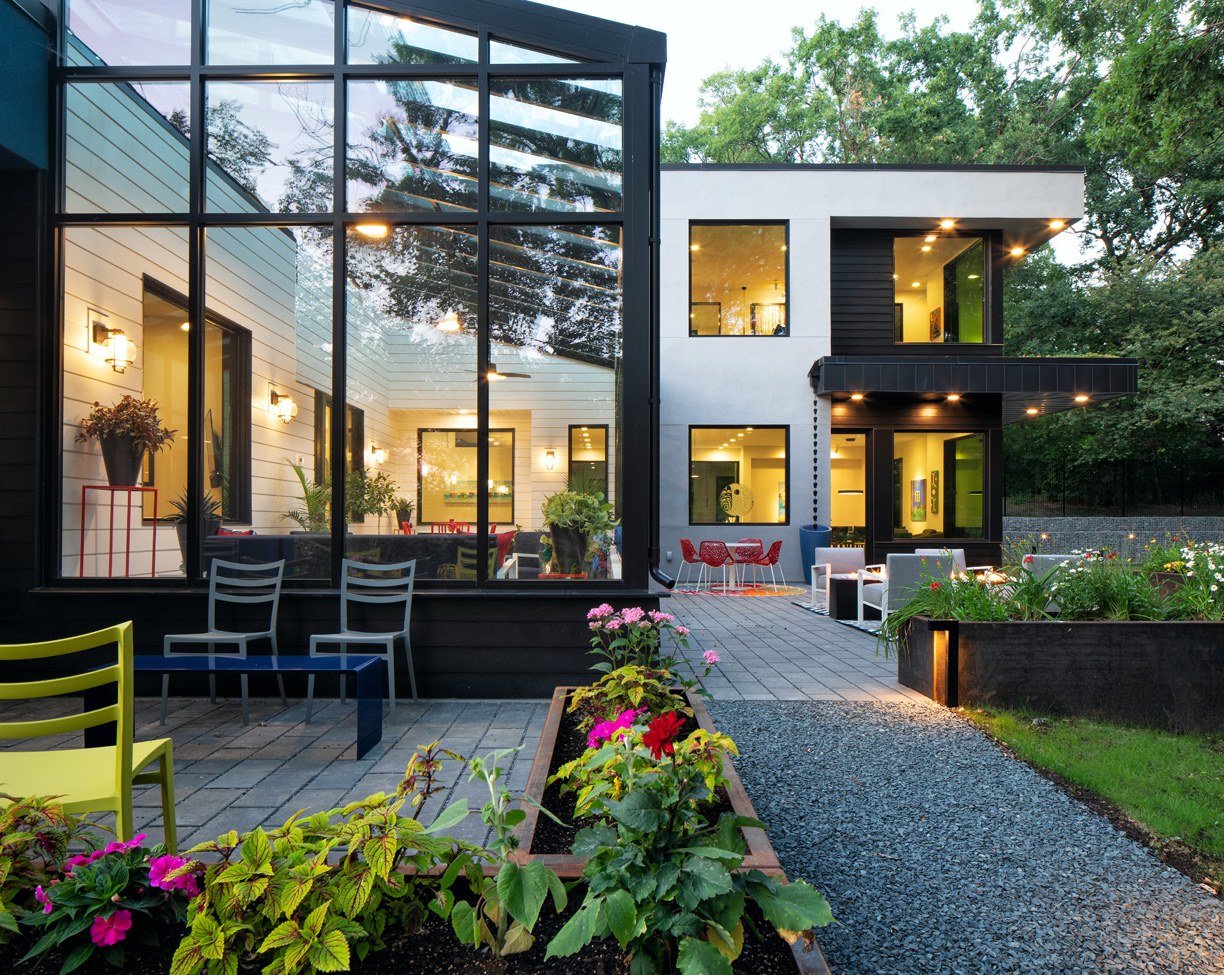
Photo courtesy of Conservatory Craftsmen
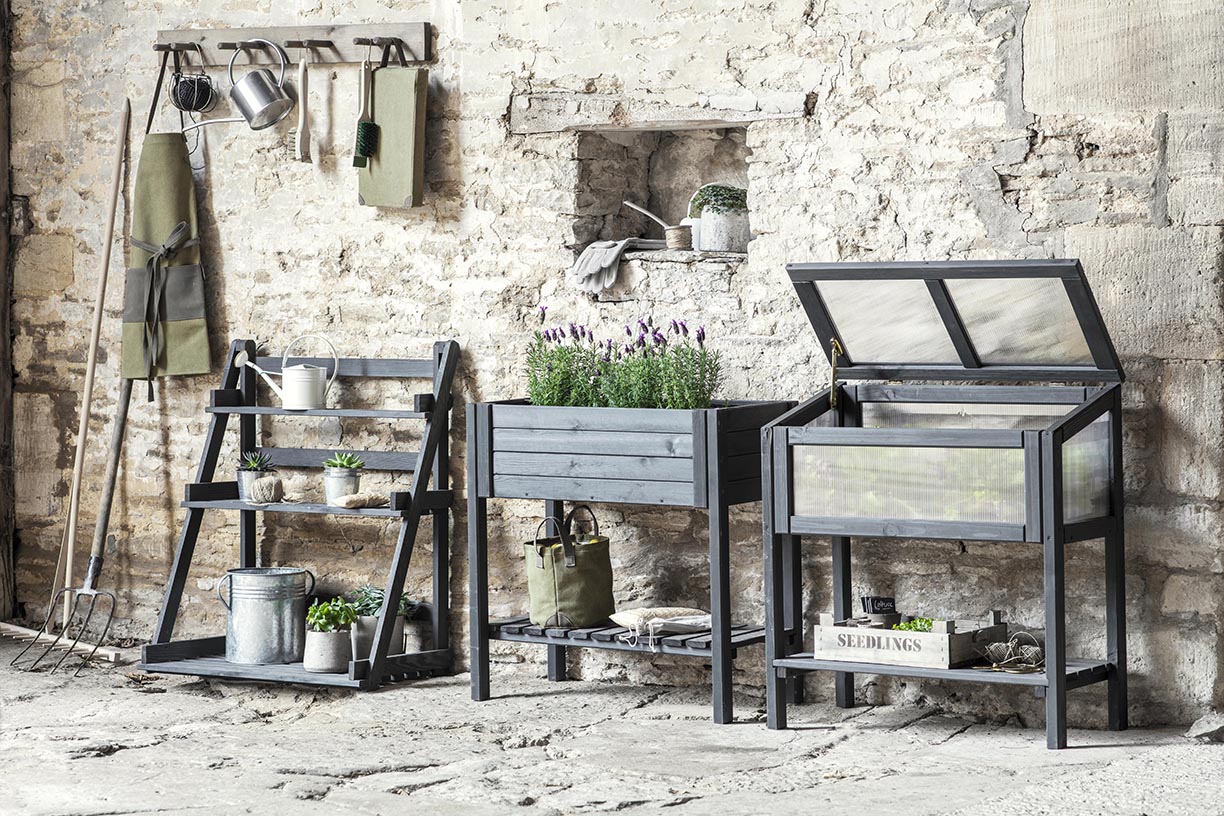
Photo courtesy of Garden Trading
4. Overall Style
For a more modern and refined style, a conservatory is the right direction — while involved in nature, it is primarily meant for relaxing near the outdoors during any season of the year.
While both add a unique addition to any home, a greenhouse is a niche space for those who love nature and gardening during all seasons of the year. For a more eccentric look, a greenhouse is the perfect fit.
With the last few weeks of summer ahead, now is the perfect time in much of the country to embrace the warm summer days and spend time in the sun. A perfect outdoor dining area can allow you to spend more time with family and friends and soak in the sun at the same time. Here are a few tips to design the area that will best work for you and your home:
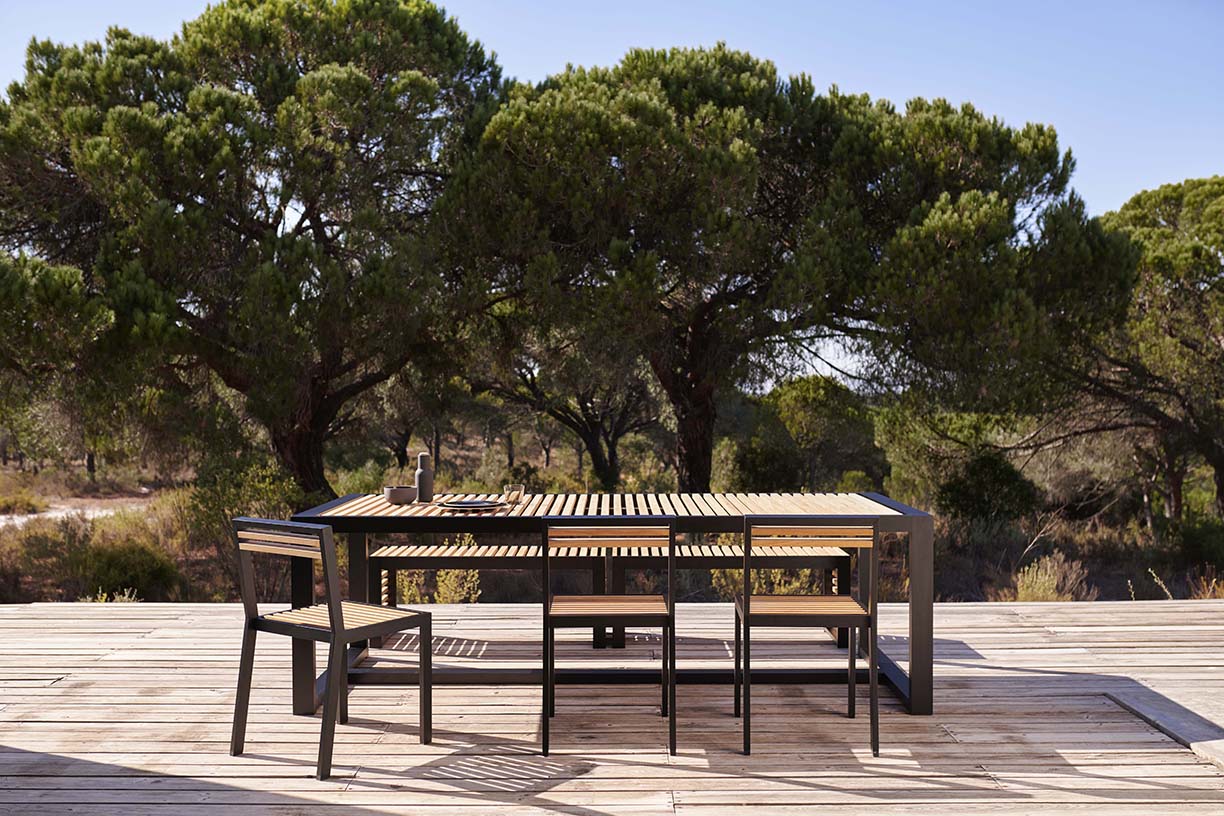
Photo courtesy of Chaplins Furniture
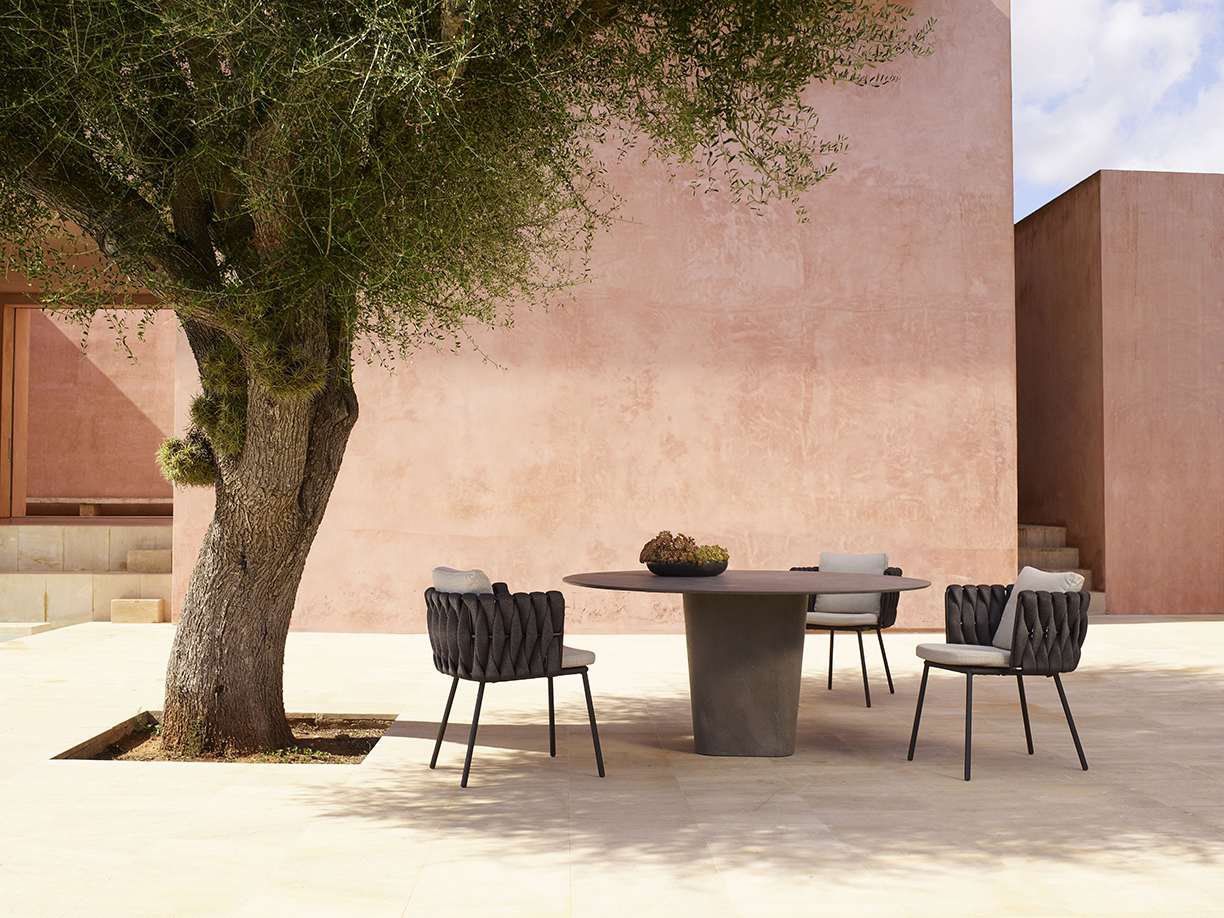
Photo courtesy of Go Modern
1. Consider the Colors
It’s always important to take into account the colors of the outdoor area. If the outdoor area is more centered around nature, consider more earthy colors that blend right into the background, creating a soft, calm atmosphere. For a bolder style, however, pick a color that contrasts sharply against the background.
With this area, the lighter pinks and tans behind the dark table and chairs create a beautiful distinction of colors. Whichever your style, make sure to consider various colors in your design process.
2. Working with the Landscape
When working with nature, there are mainly two choices: working with the land or changing the landscape to fit your needs. Keeping the land untouched will allow for a more natural atmosphere, while changing the landscape may be more accessible and practical for an outdoor dining area.
For example, this bench by the pool allows a great lunch or dinner with family and friends. While nature is not emphasized, it creates a sleek, clean design that’s easily accessible to the house and pool, allowing for gathering around the table at any time.
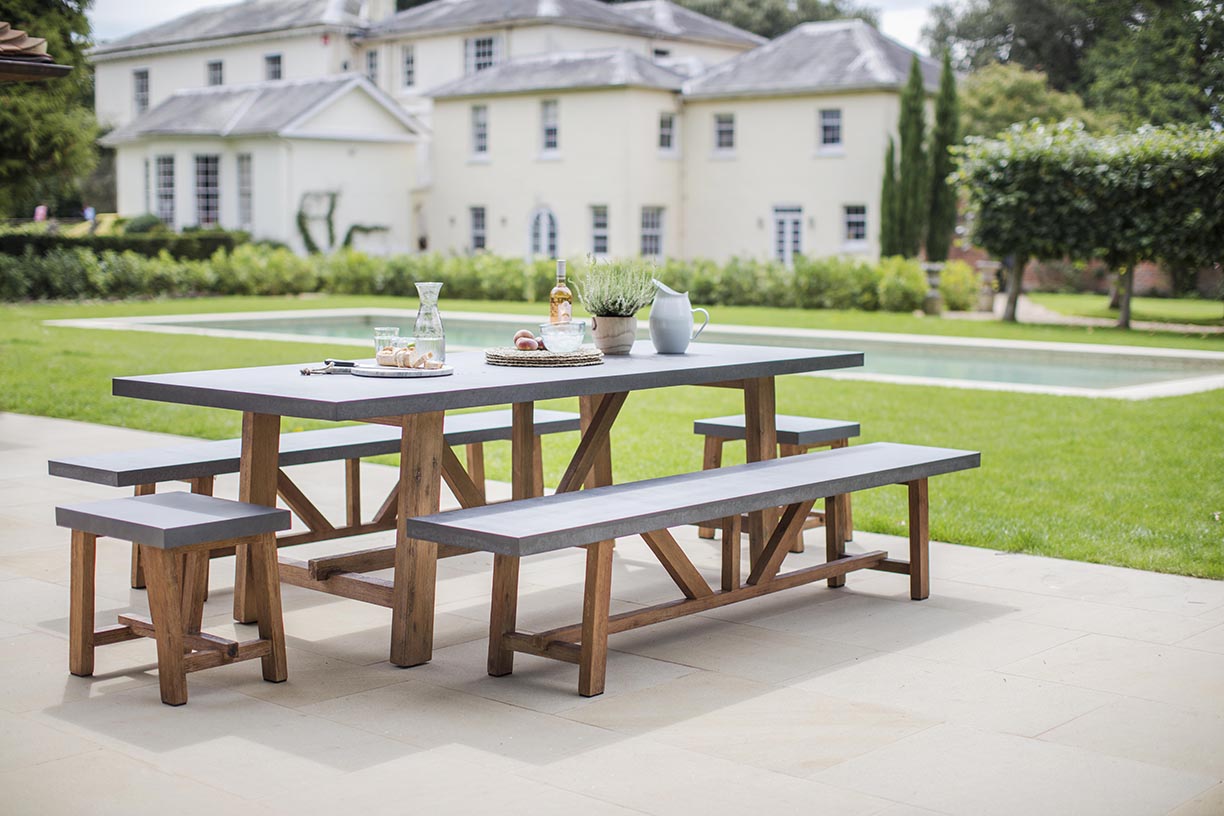
Photo courtesy of Garden Trading
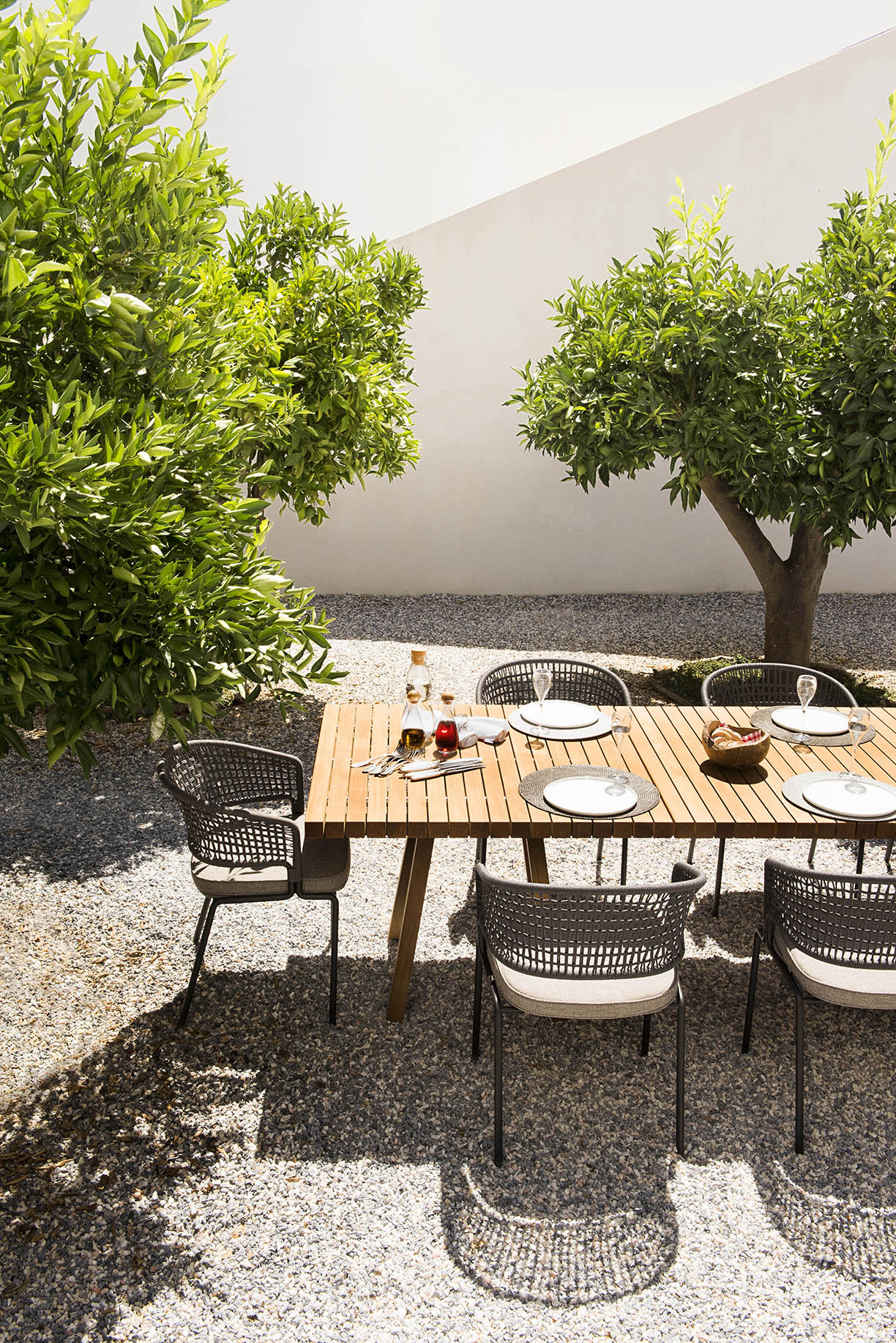
Photo courtesy of Go Modern
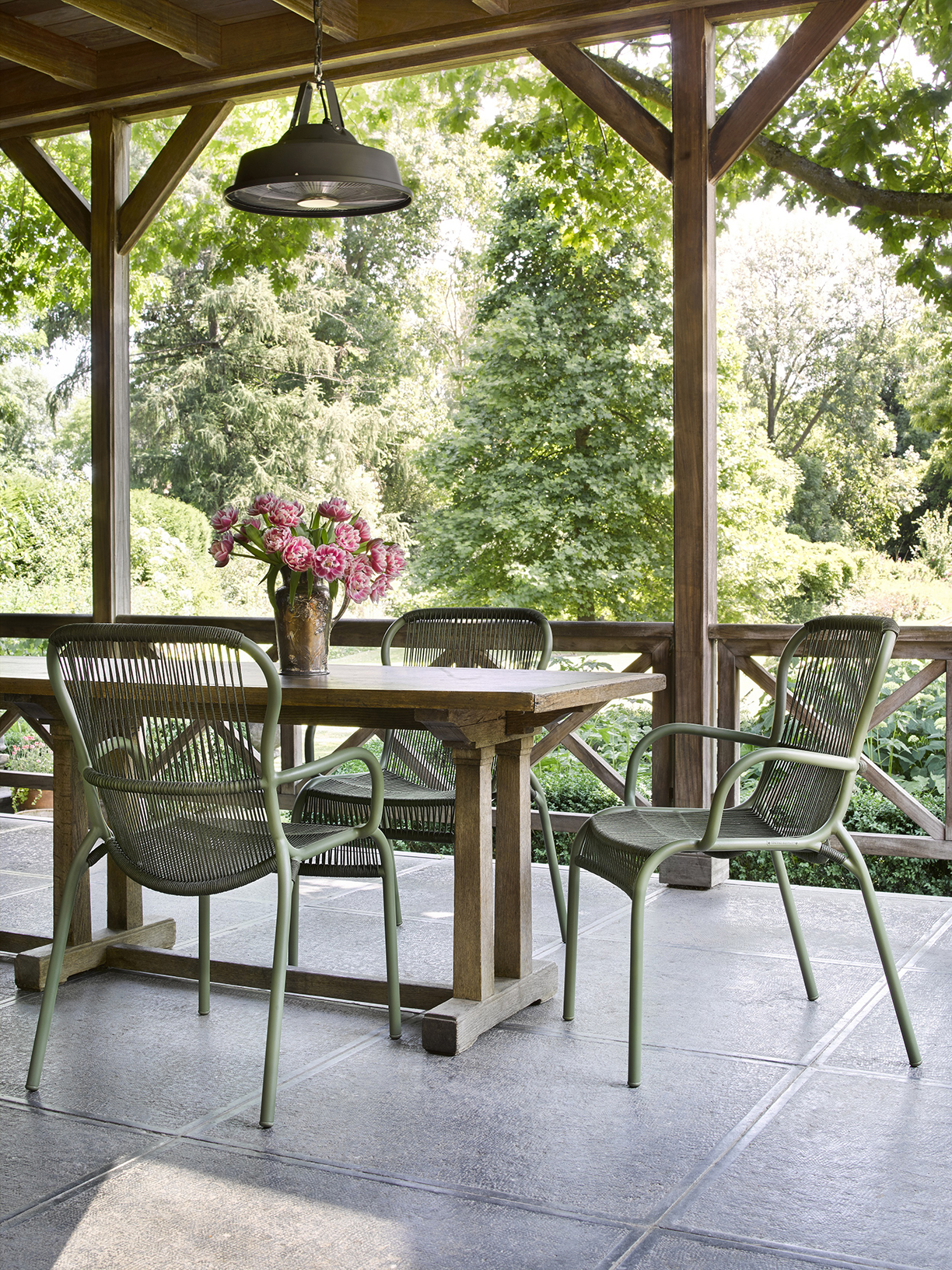
Photo courtesy of Lagoon
3. Creating Shade
While the idea of an outdoor dining area underneath the bright sun is important, practicality should always be a factor. With the sun out all day, it may get too hot to stay outside and enjoy the summer air. Remember to provide adequate shading, whether that’s with a tree or a canopy, so you and your guests are able to spend as much time outside as you would like.
This outdoor dining area was built with a roof for this exact purpose. Crafted with natural wood, it forms a calm atmosphere blocking the sun but keeping everyone close to the nature that surrounds them.
4. A Style that Fits You
Whatever the design, make sure that it fits your personality and will be used often for gatherings of family and friends.
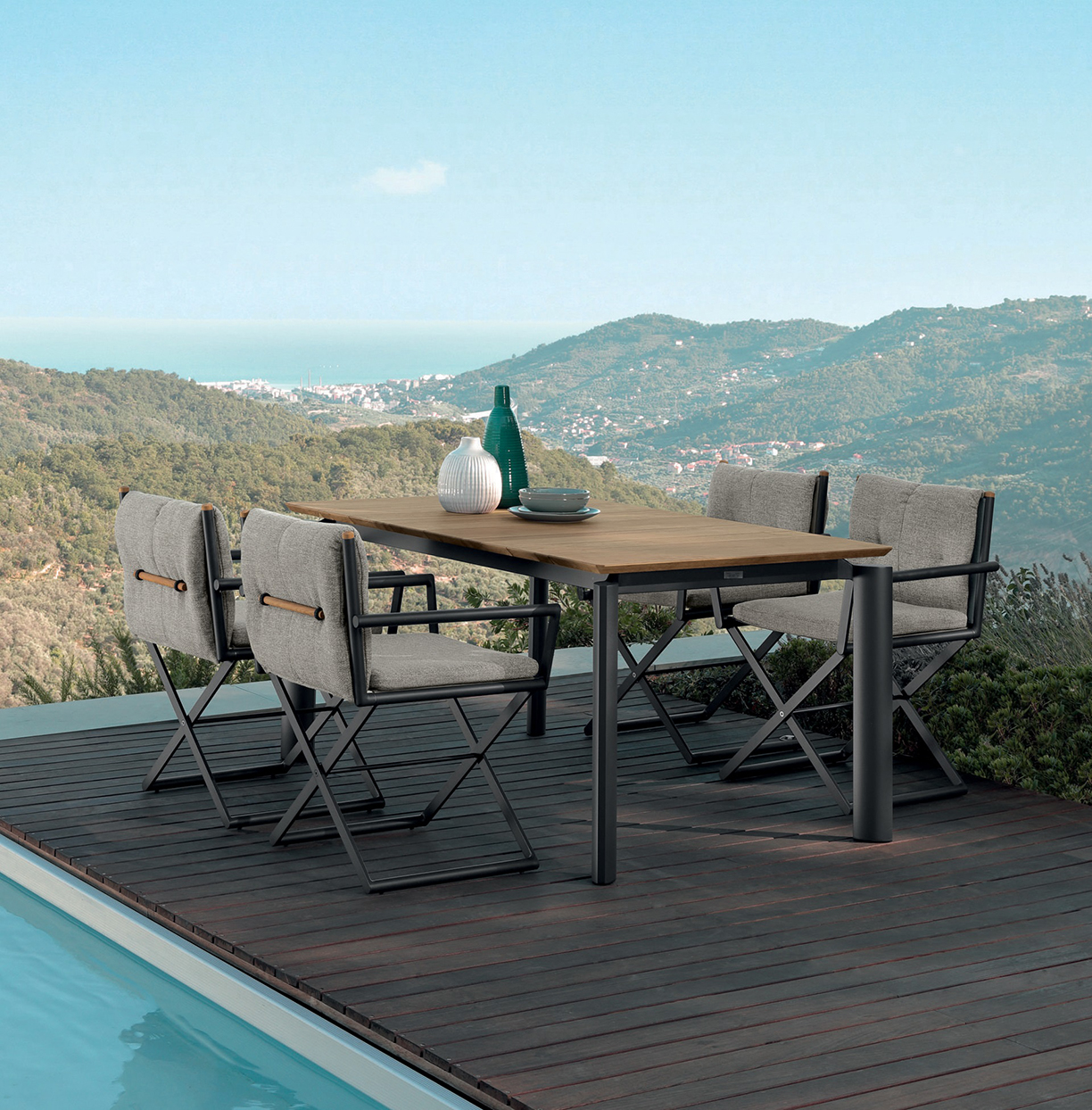
Photo courtesy of Lagoon
Jeff Hyland and Drew Fenton are thrilled to present The Glazer Estate, located in Beverly Hills, California. Totaling approximately 27,500 square feet, the massive concrete home with a modern museum-style aesthetic was completed in 1995, and has since replaced the longtime home Dean Martin originally purchased in the 1950s. The property was most recently owned by late real estate developer Guilford Glazer and his wife, Diane Glazer.
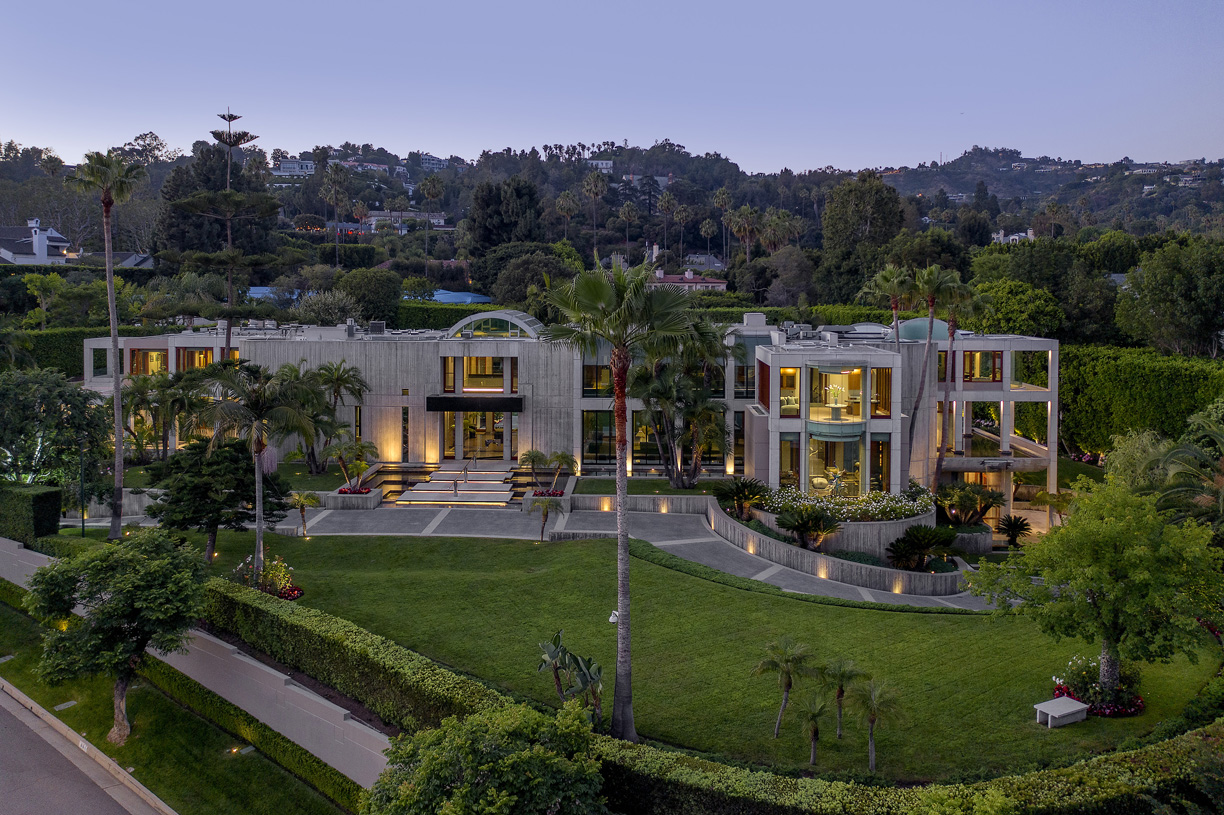
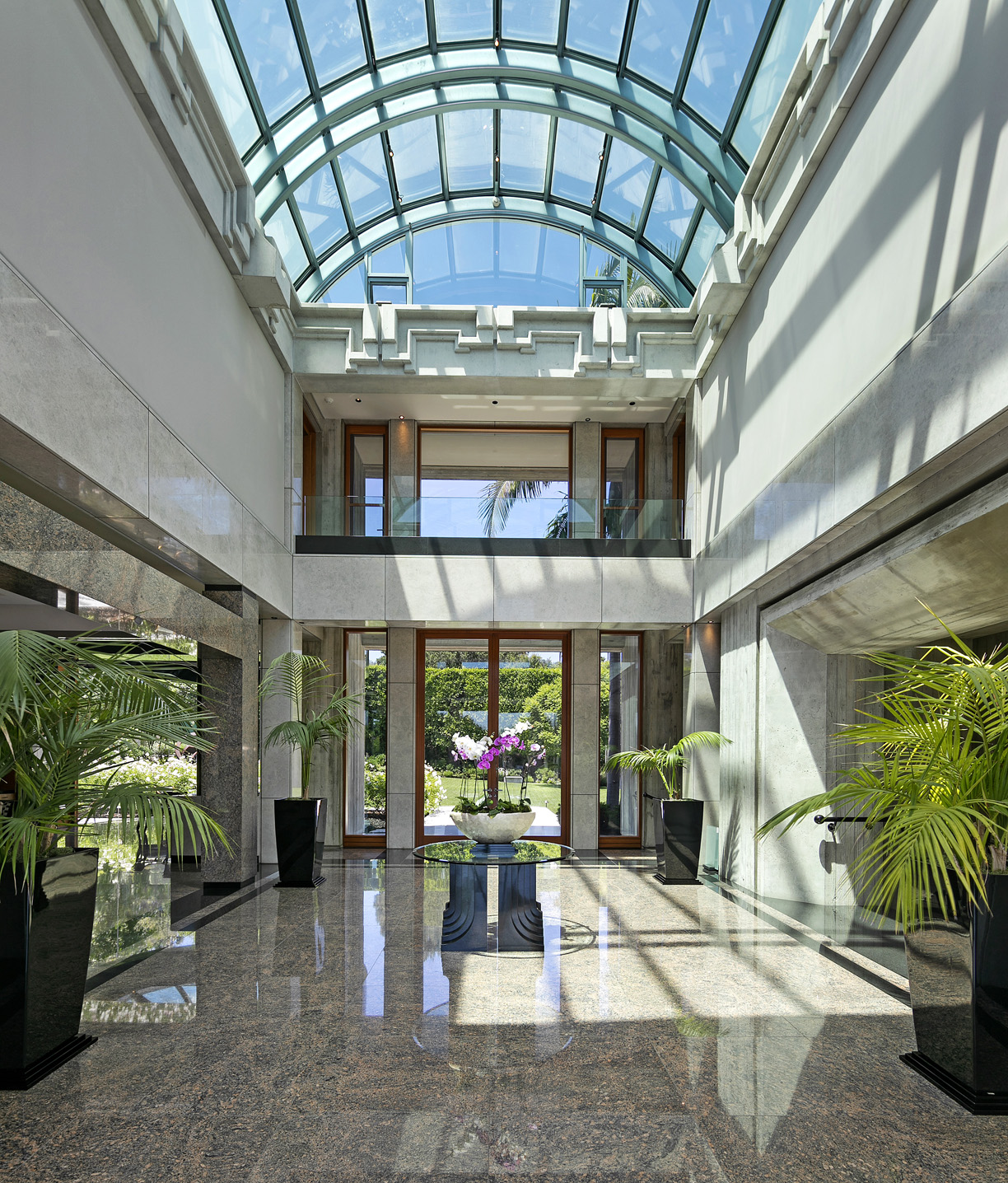
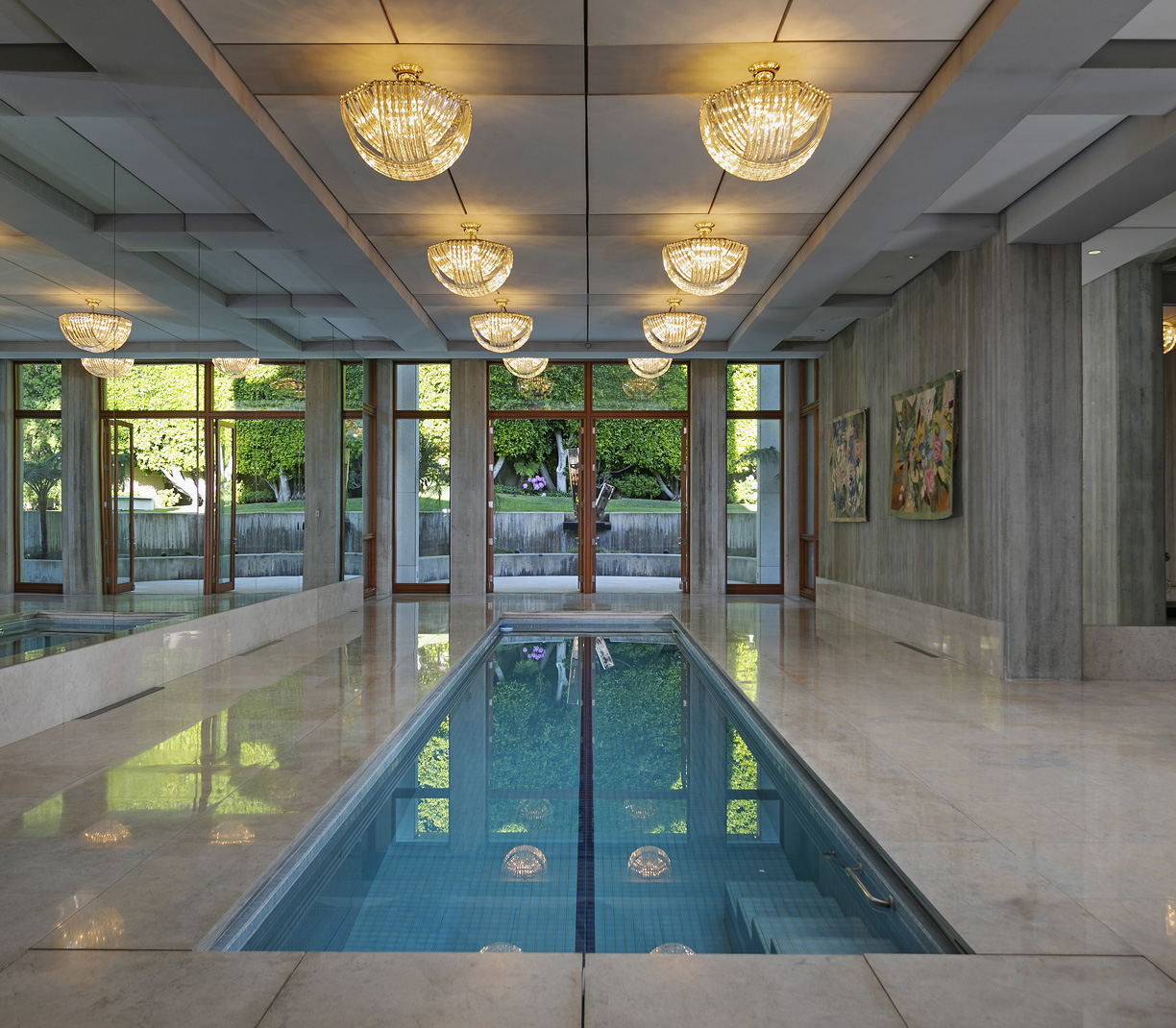
“Offering an exclusive Beverly Hills lifestyle, this rare gem is the ultimate in refinement and architectural prowess,” Hyland says.
Beautifully situated on 1.6+ acres in the most prime neighborhood of Beverly Hills real estate, Mountain Drive is arguably the best street in the city, making The Glazer Estate a world-class home in a world-class location.
Guests are instantly greeted by a long, private driveway surrounded by park-like grounds. With no expense spared, The Glazer Estate makes entertaining on a grand-scale seamless, with the ability to host over 1,000 guests.
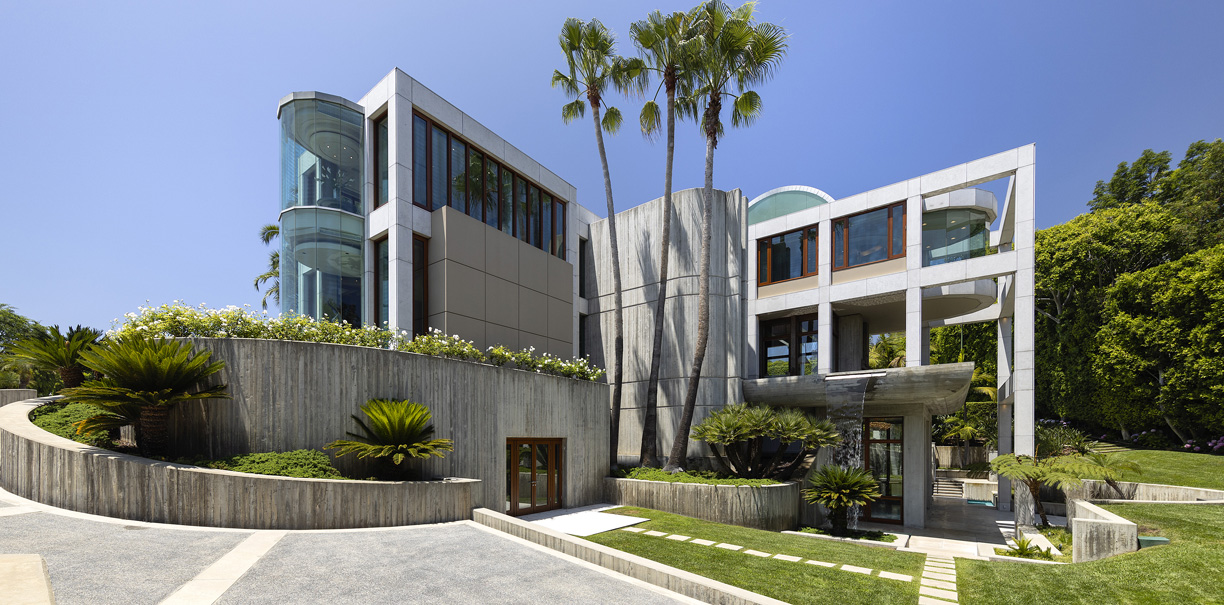
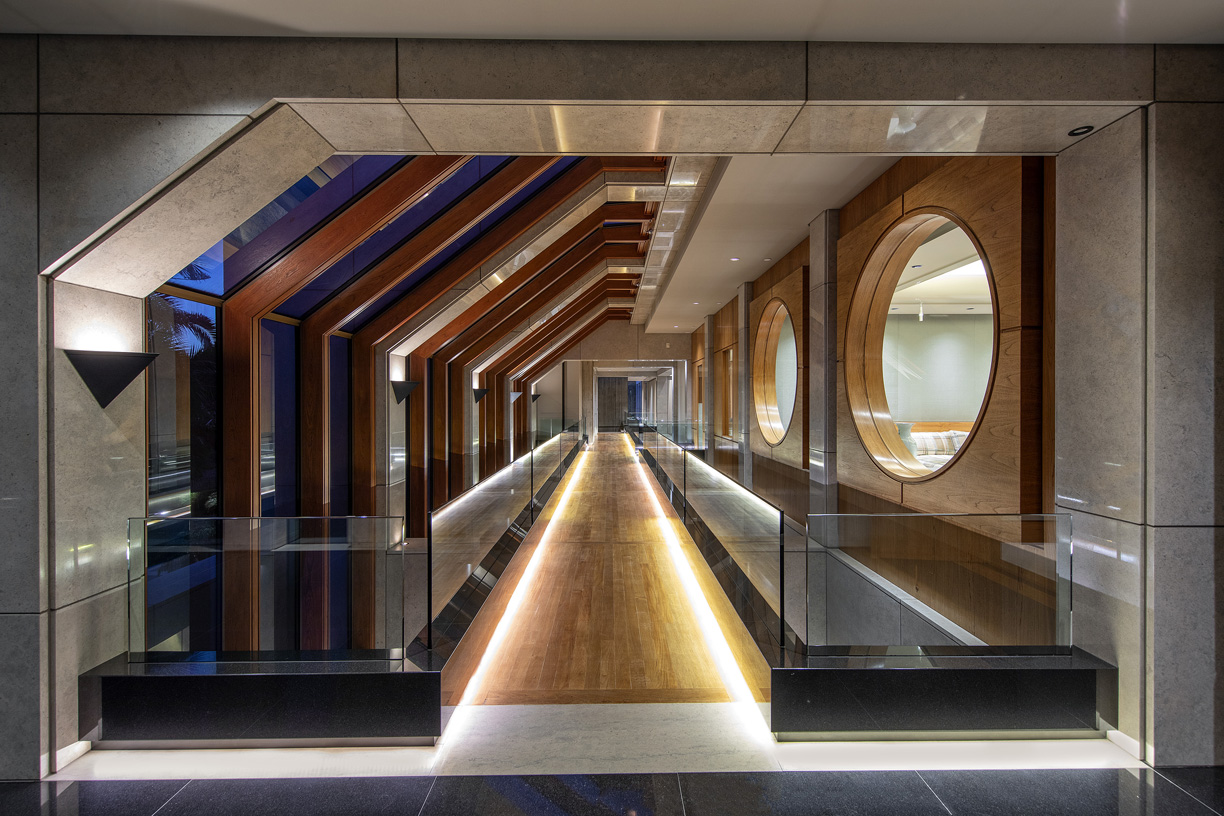
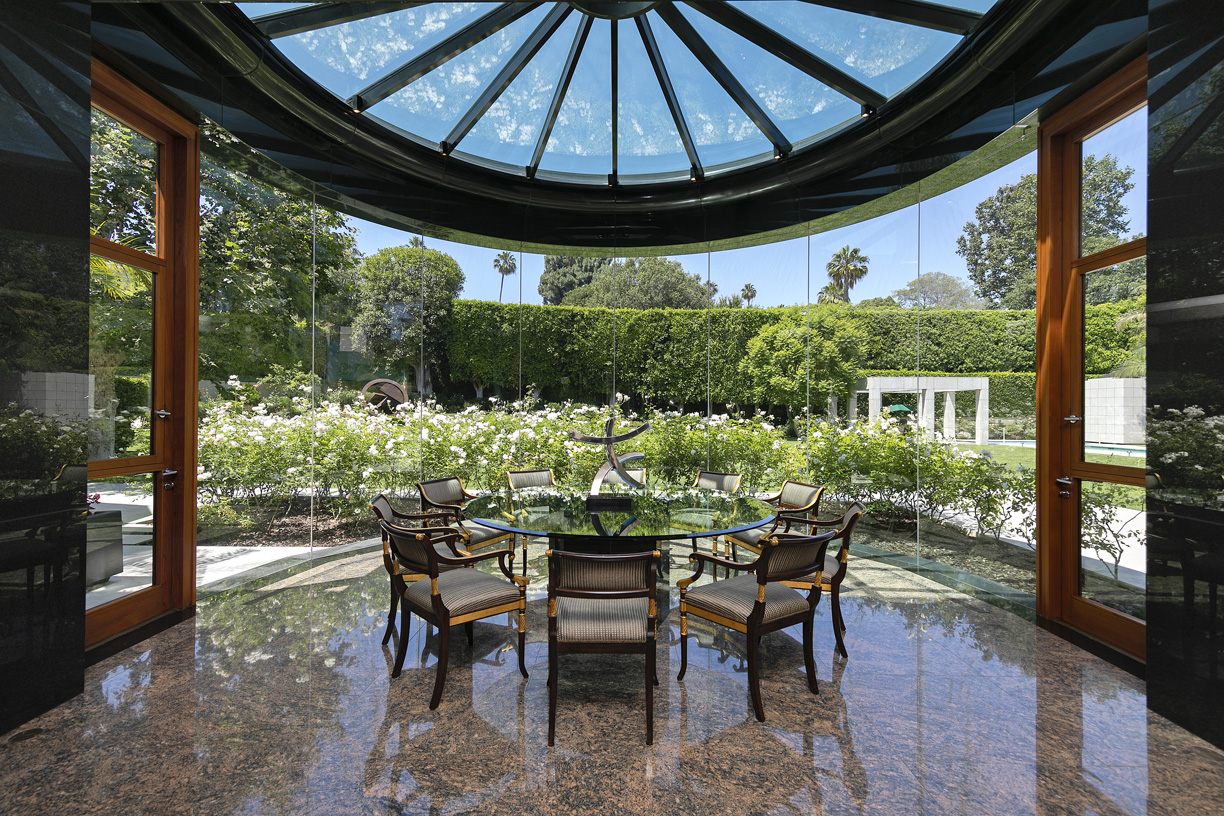
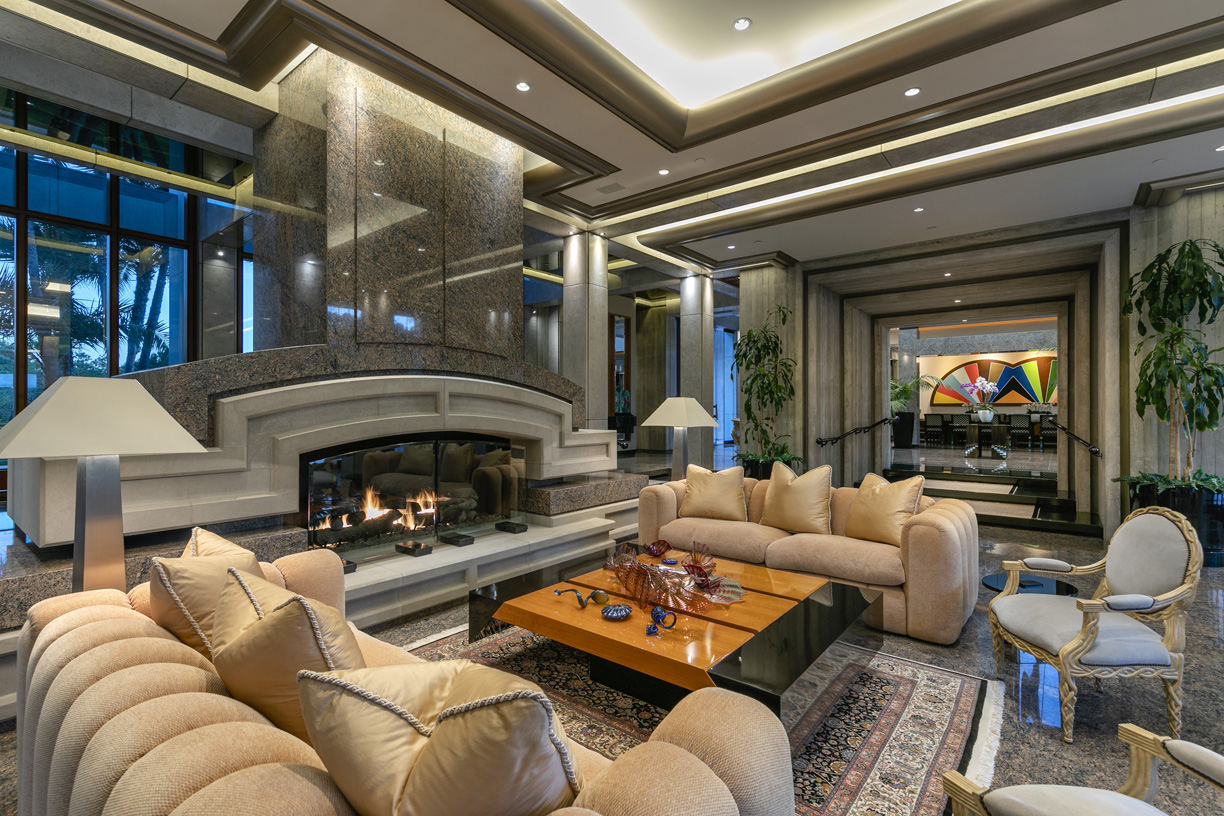
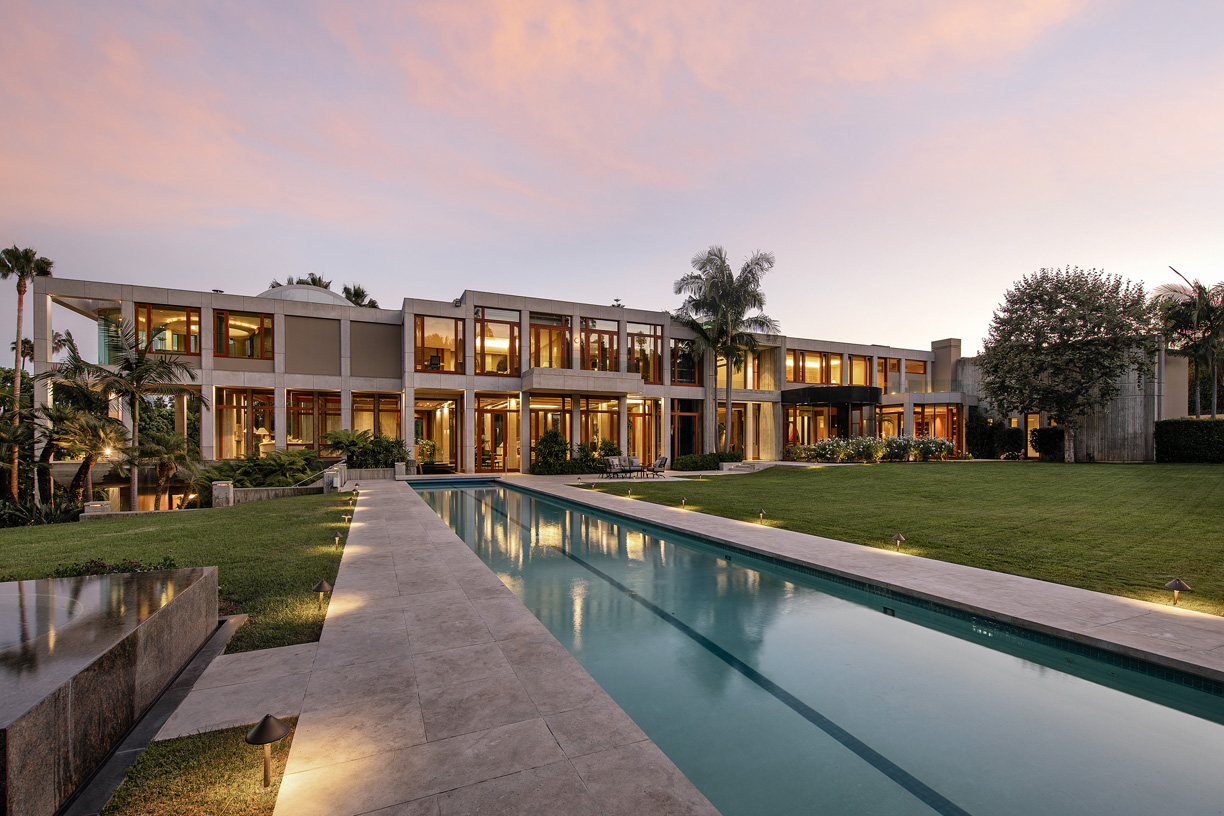
From large teak doors to a two-story atrium and theatrical water elements, only the highest level of quality is showcased throughout the residence. The open floor plan allows guests to flow between the grand formal dining room to the glass-enclosed junior dining room, formal living room, and an exceptional water lounge surrounded by ponds on all sides.
The lavish master retreat is a world unto itself, with dual baths and closets. Other standout amenities include indoor and outdoor pools as well as a ballroom.
Photos courtesy of Jim Bartsch
With a sleek, modern style becoming the new trend in home design, chandelier makers are turning from the traditional designs to modern light fixtures instead. Not only do they add an elegant and modern piece to the room, but they’re becoming pieces of art in their own right.
The creativity that goes into designing and manufacturing these modern chandeliers is pushing the boundaries on the line that constitutes furniture and works of art. With that said, here are some tips on choosing which modern chandelier is best for you:
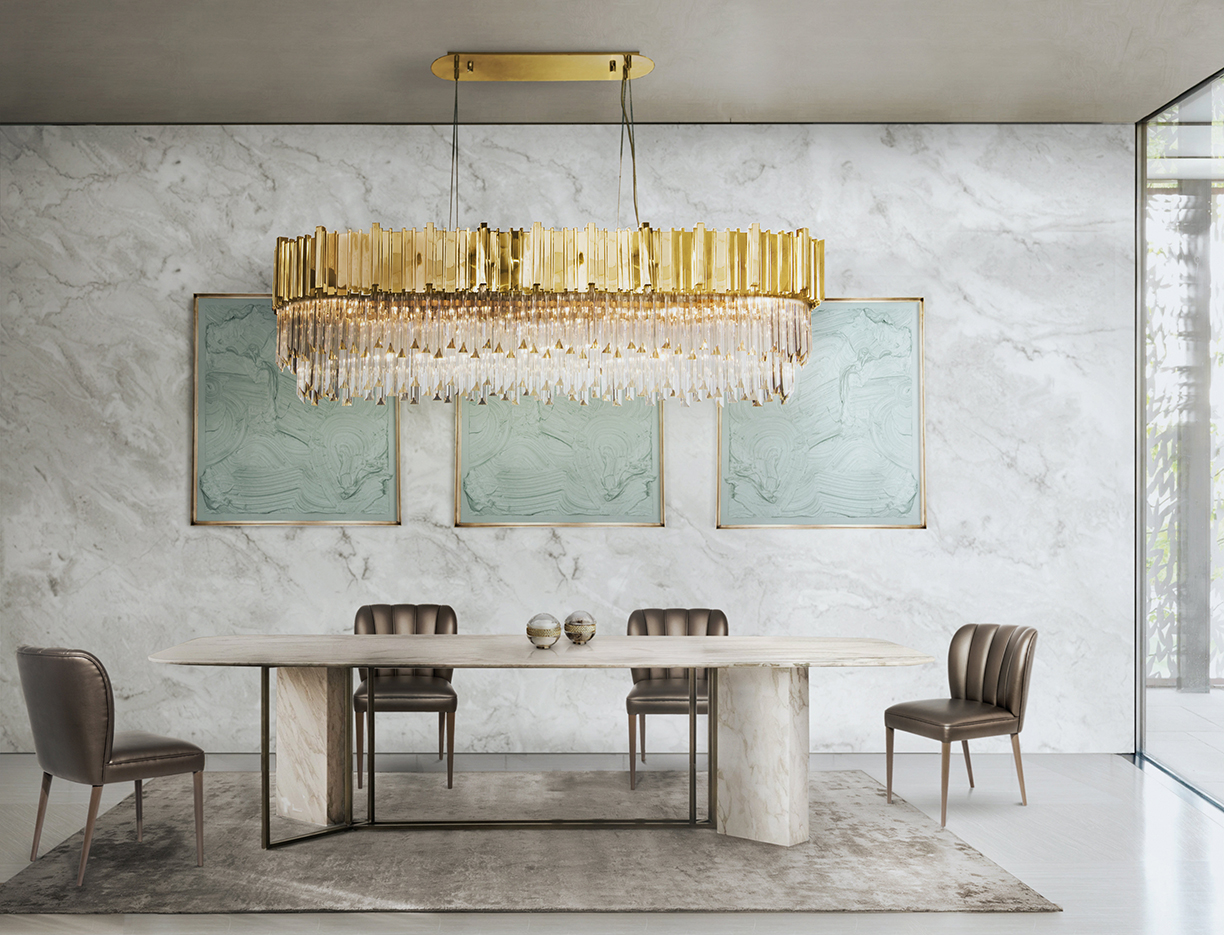
Photo courtesy of Covet NYC
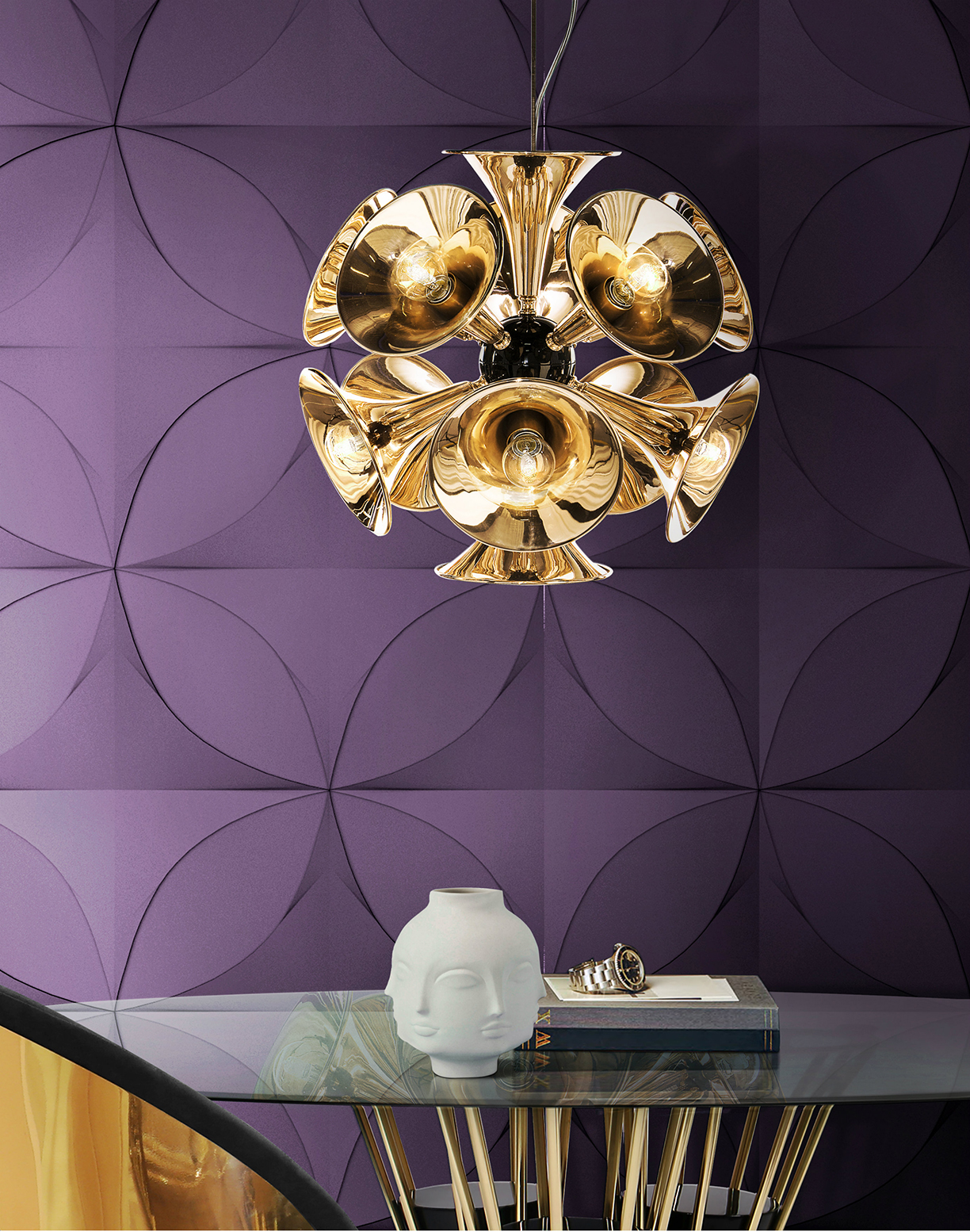
Photo courtesy of DelightFULL
1. Get Creative with Material
With any modern chandelier, the material matters. Getting creative with the material used to create the chandelier can add a great addition to the room’s decor. Creativity is proven to go a long way in designing the perfect modern chandelier.
The Botti pendant lamp, inspired by the American trumpet player Chris Botti, adds a fun twist by using trumpets as the main material of the chandelier. While still luxurious in its style and design, it adds personality and a conversation piece to the space. While the chandelier is more retro in its style, using a creative material and thinking outside of the box can be beneficial for whichever style is preferred.
2. The Space it Resides
Both small and large chandeliers can be a great addition to any space. It’s important, however, to consider the type of space when choosing which modern chandelier to include in it. For a foyer or room with high ceilings, look for a larger chandelier to create a major focal point. In spaces like dining and living rooms, a smaller chandelier will still be a work of art, yet it won’t take away from the rest of the design in the space.

Photos courtesy of Muse Residences
In recent years, more and more hotels and apartment buildings are getting rid of the traditional designs and replacing them with modern and sophisticated styles instead. The modern chandelier in this residential building is certainly the focal point, simply for its sheer size and elegance. When visitors and residents walk into the building, they are in awe of its design.
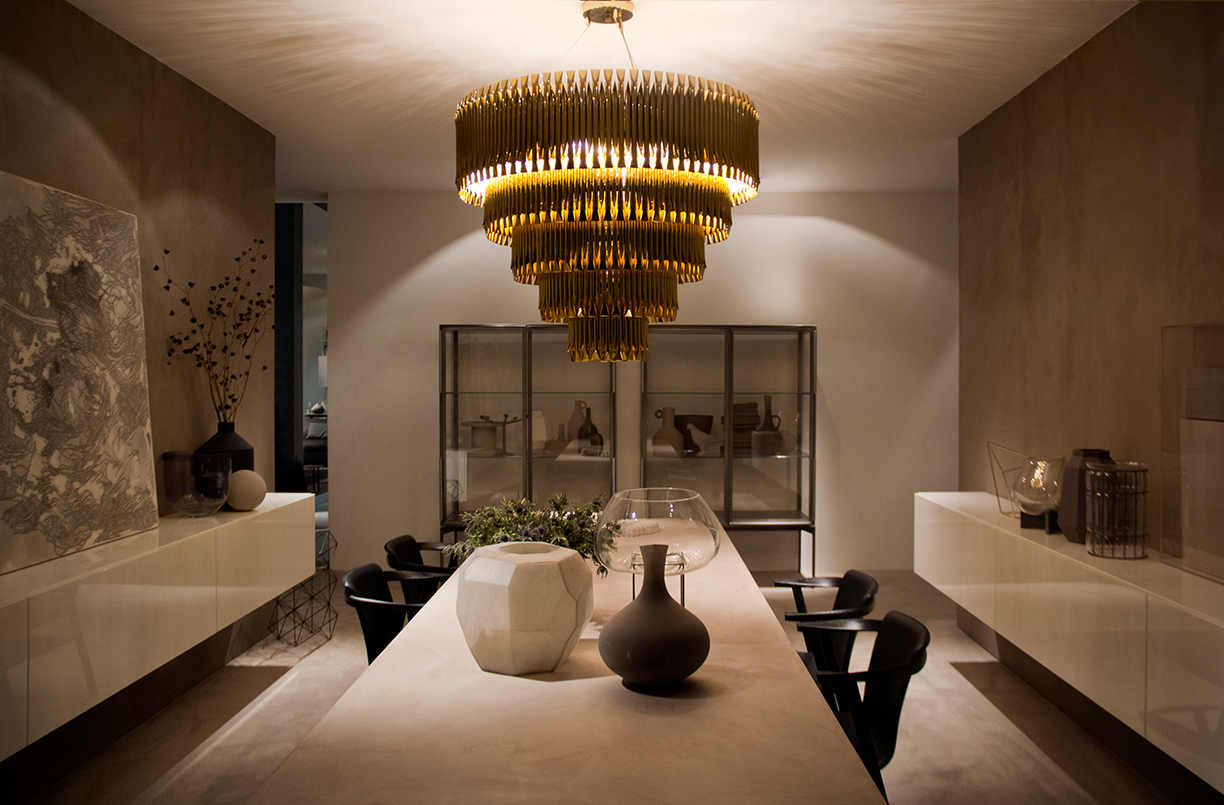
Photos courtesy of DelightFULL
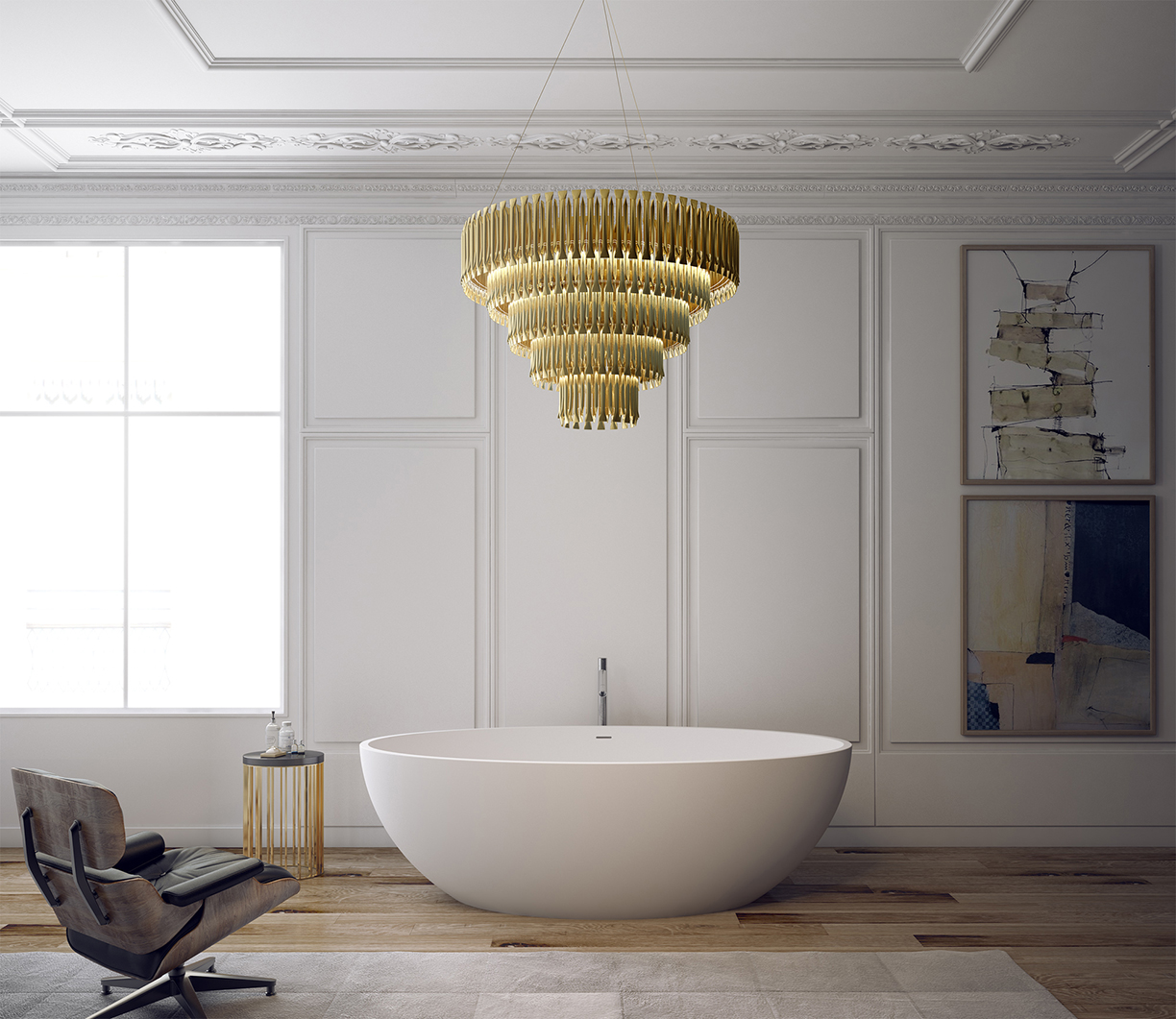
3. The Lighting
In terms of lighting, either a dramatic flair or a softer hue can be a great addition to any space. While the design and material of chandeliers can be similar, the lighting can make a major difference in the atmosphere in the space.
While the first chandelier provides a dramatic light in a darker room, the second provides a more subtle light in a room ample natural light. Both, however, add to the design and atmosphere of the space.
4. A Work of Art
Regardless of the material, design and lighting, it’s crucial to remember the creativity a modern chandelier allows. Whether it’s above a dining table, in the living room as a statement piece or the focal point of the foyer, modern chandeliers aren’t simply light fixtures anymore — they’re works of art.
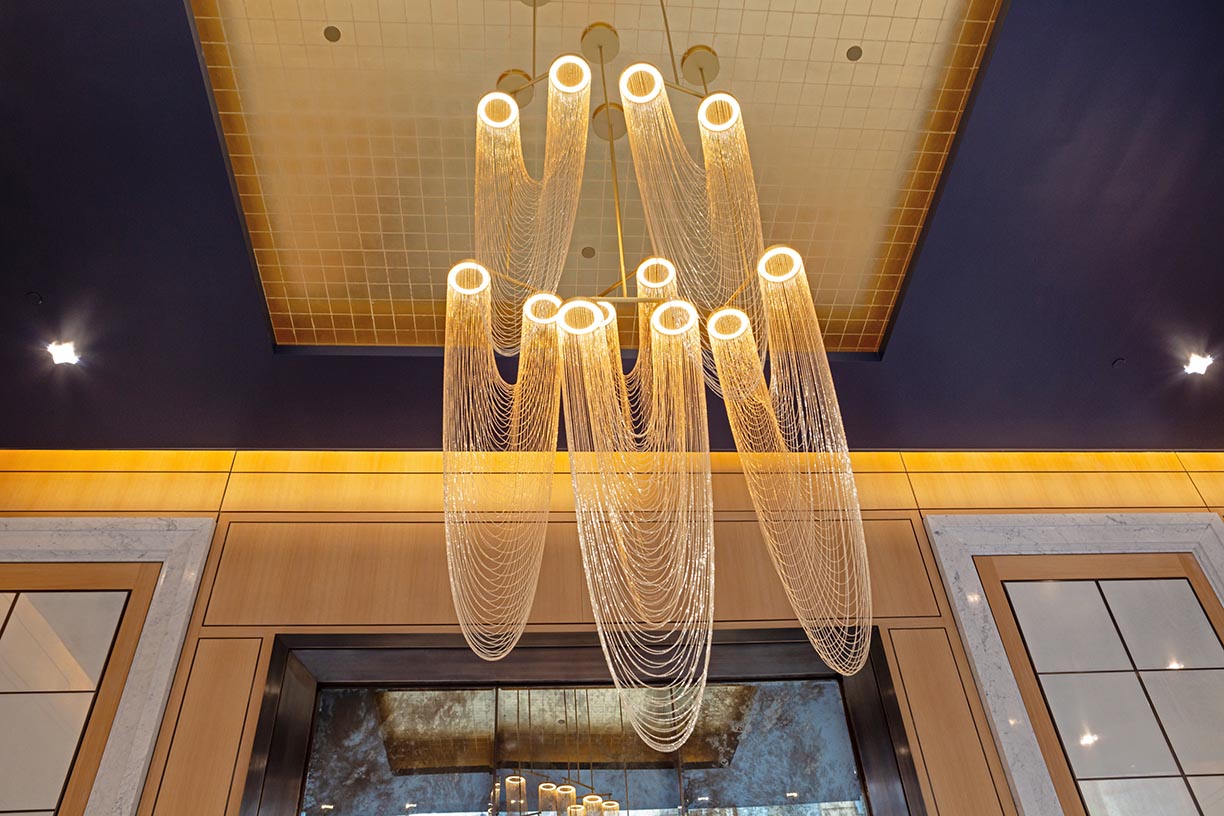
Photo courtesy of The Alyn
For those looking to travel to Italy this summer, make sure to visit the town of Lecce in the country’s southern Apulia region. Filled with gorgeous cathedrals and historical sites, the city has an “oOld-w World” feel to it — especially now that the Parco delle Mure Urbiche, the city’s ancient walls, have now been restored.
The Italian limestone manufacturing company Pimar recently won first-place for its restoration of Parco delle Mure Urbiche in the city of Lecce during the City Brand & Tourism Landscape Symposium on June 20, 2019.
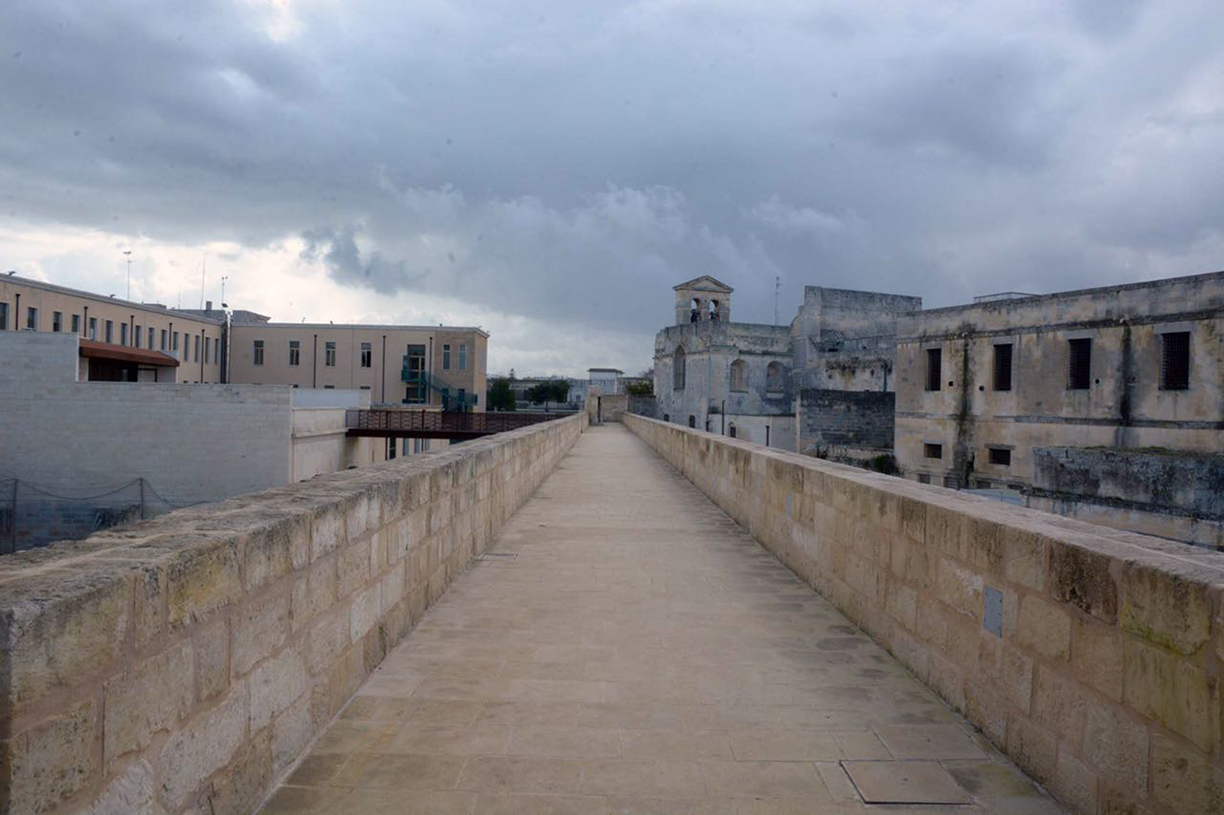
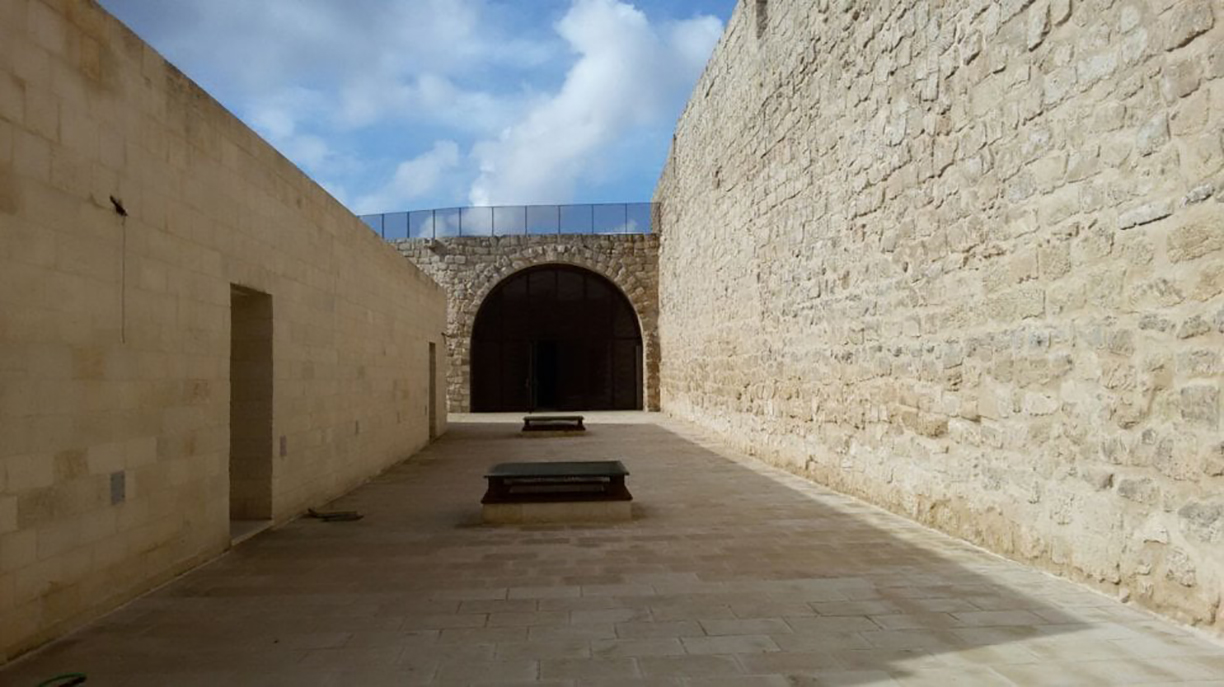
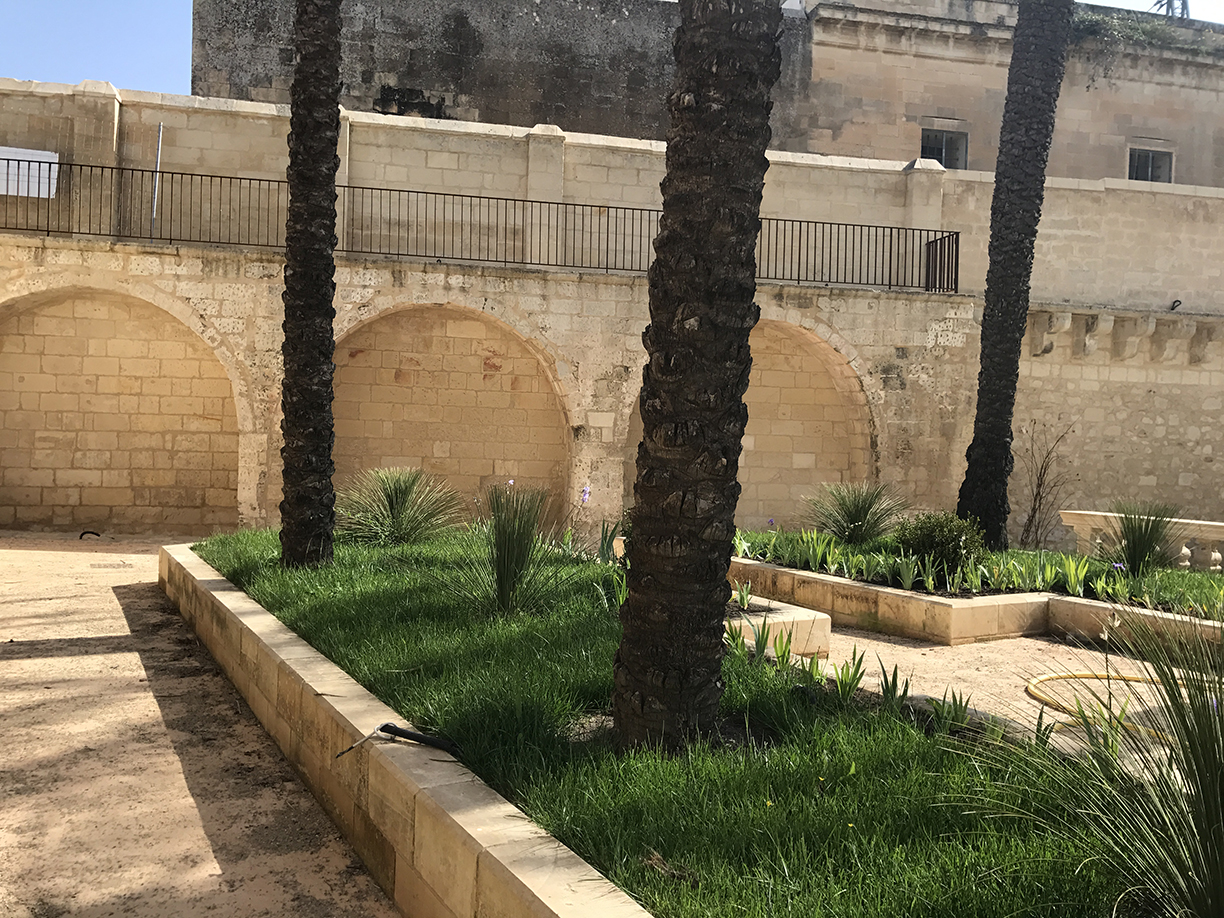
In the restoration of the ancient city walls located in Lecce, Pimar collaborated with architect Patrizia Erroi from the Historic Center Office of the city of Lecce. Both aimed to enhance the value of an archaeological area in a harmonious relationship with the landscape, while making it fully accessible to the public.
The international design recognition is promoted by the National Board of Architects, Planners, Landscape Architects and Conservation Architect and International Magazine PAYSAGE TOPSCAPE, in collaboration with the Milan Triennial, which hosted the inauguration ceremony its Hall of Honour.
Within the framework of the rehabilitation of urban space, Pimar stood out for being a “well thought-out requalification project focusing on the restoration of the historic city walls, which unveiled an unprecedented scenery in Lecce.”

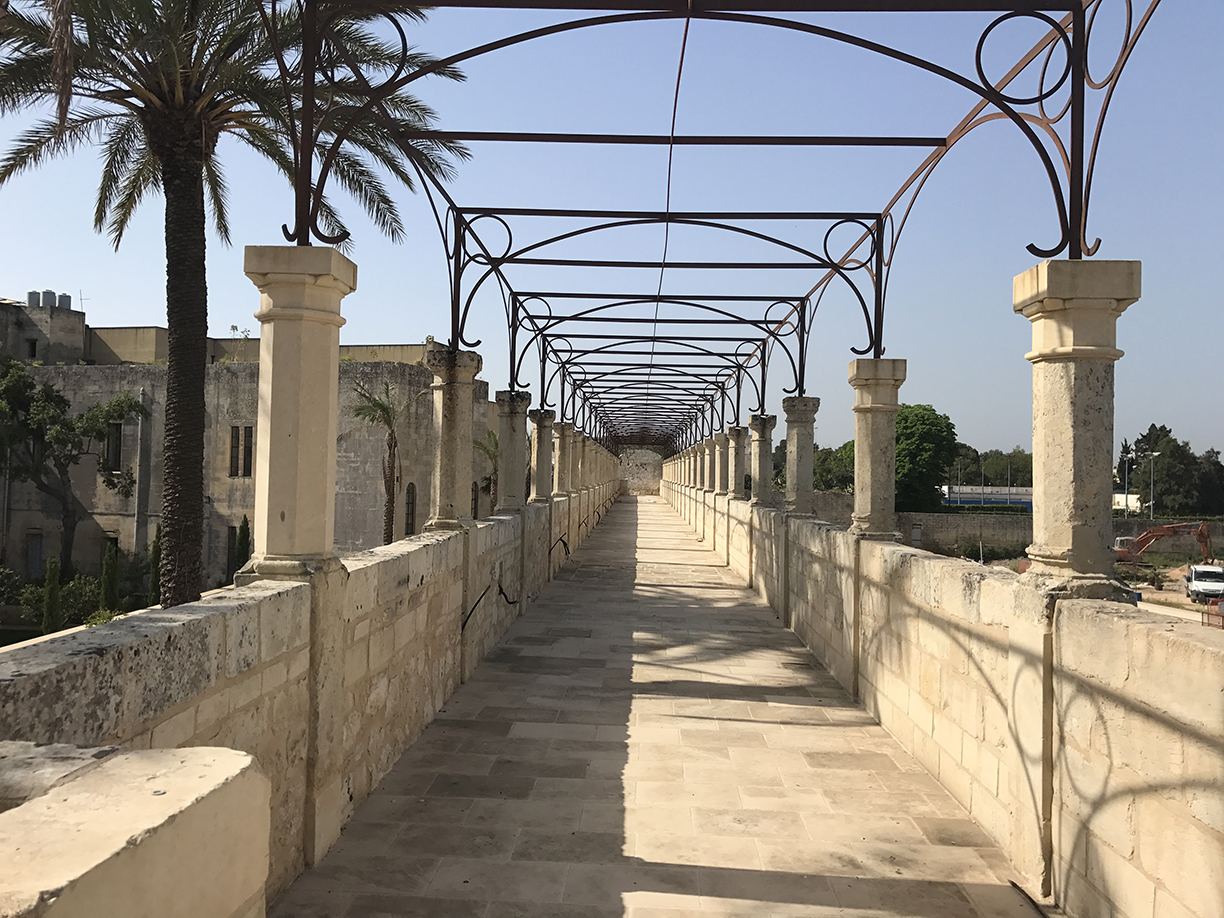
The restoration of the Mura Urbiche made exclusive use of Pimar natural stone. Thanks to the restoration works, the walls are now perceived — together with the moat and the rock outcropping unearthed by the archaeological dig — as a single stone landscape having intrinsic figurative and formal qualities. The restoration work performed on the 16th century fortress also brought to light a Roman road, dating to between the 2nd and the 3rd century BC, which continued to be used until the 16th century.
The detailed and laborious process granted Pimar the first-place award at the symposium. With this recognition, the association reasserted its commitment to the promotion and development of landscape architecture on the occasion of the 100th anniversary of the foundation of the first course of studies in Landscape Architecture.
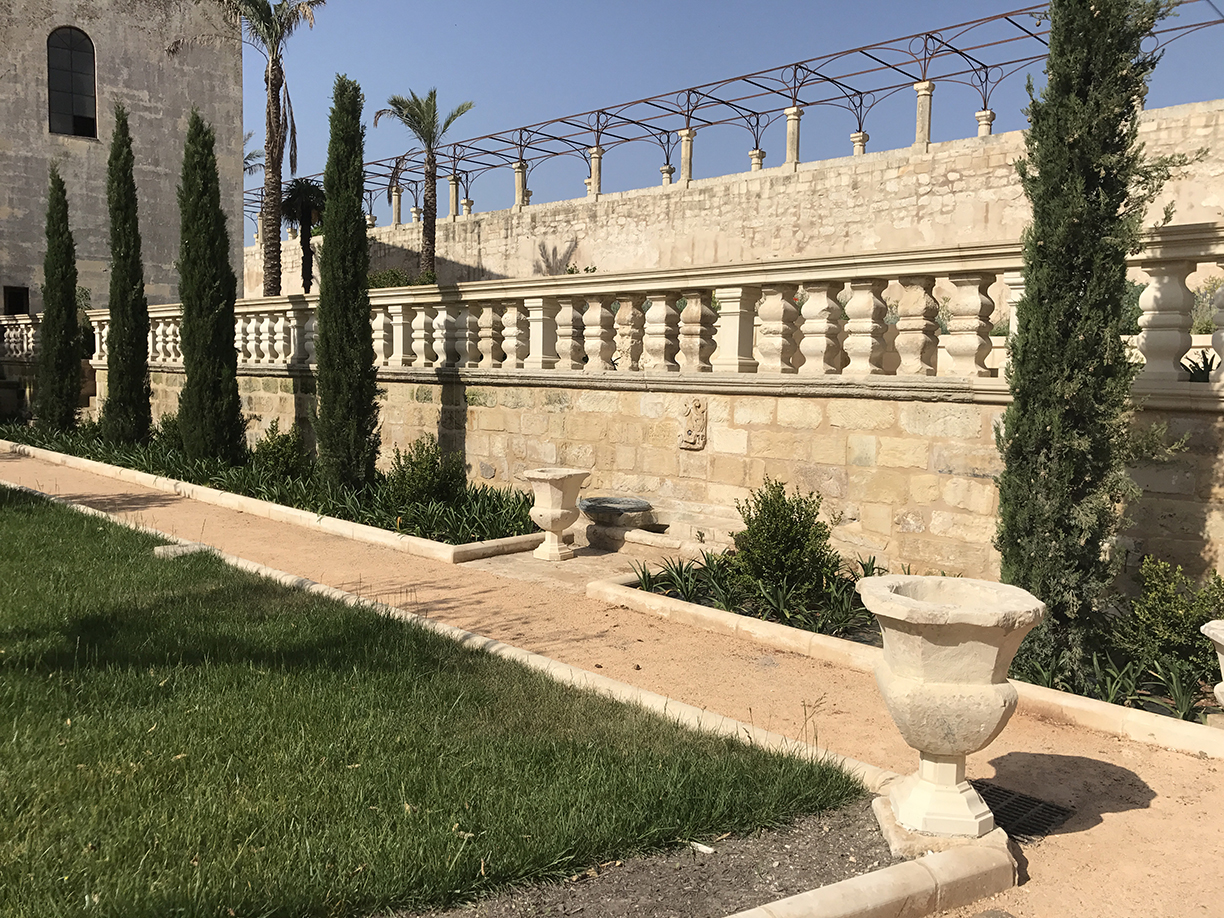
With the guidance of experts, travelers are able to experience more than simple sightseeing.
Spanning across Africa, Europe and The United States, these expert-led trips — curated by Architectural Adventures — blend world-class vacations with a deep appreciation for culture, history and architecture. Serving as the official travel program of The American Institute of Architects, Architectural Adventures plans each trip alongside knowledgeable architectural experts — unlocking the historical, cultural, and aesthetic significance behind the world’s most notable architecture.
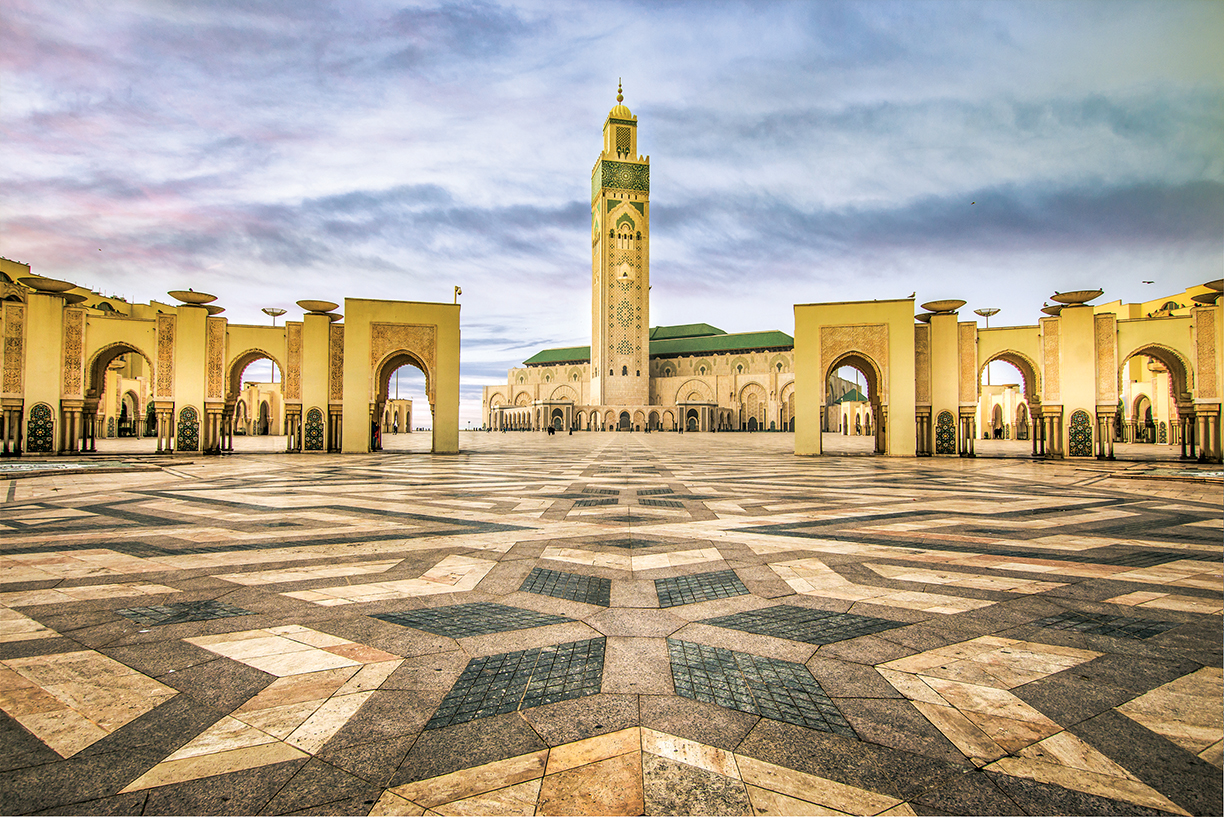
©istockphoto / Daniel_Keuck
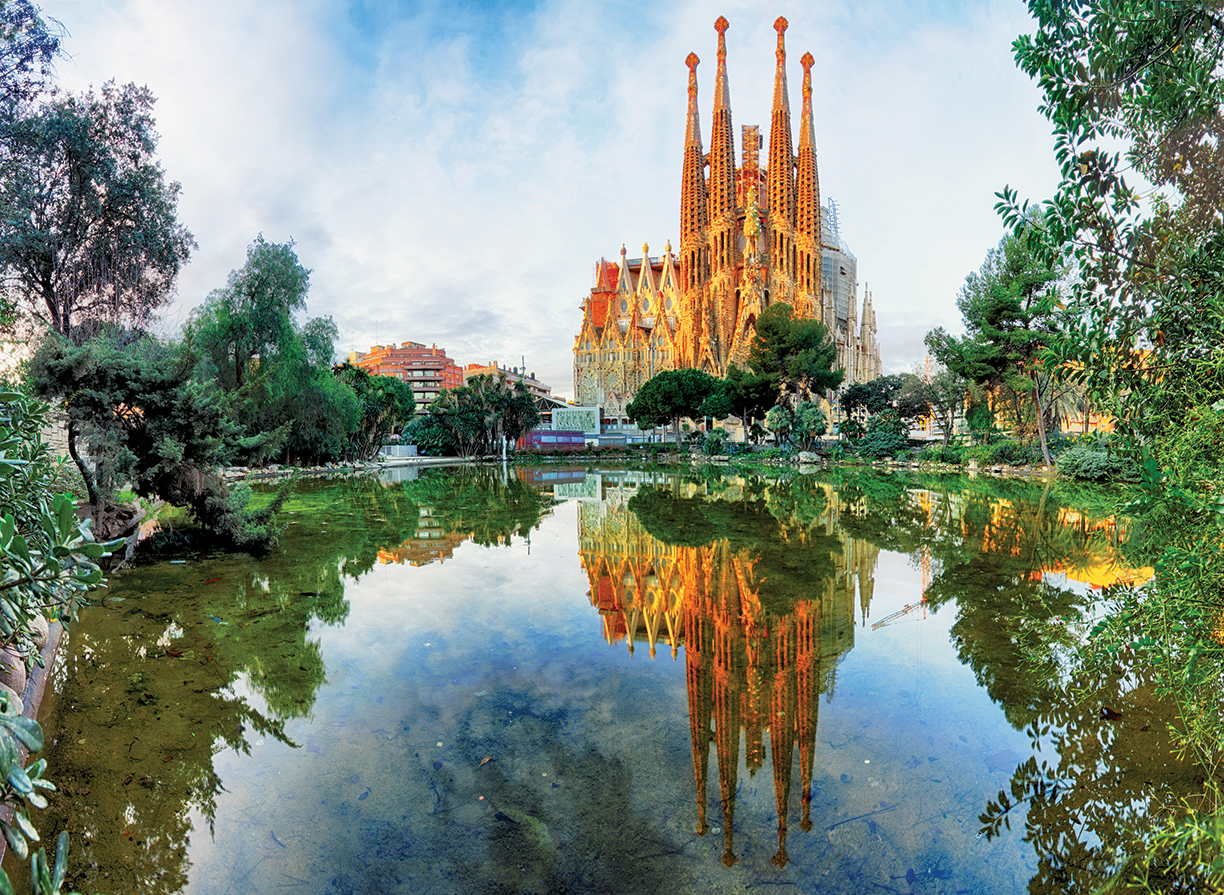
©istockphoto / TomasSereda
“In both Barcelona and Rome, we stay in the same city, and each day discover more about it. Staying in one place affords developing a more intimate look at the architecture and culture of the city.”
Barcelona, Spain
Whether she’s embracing the local language, indulging in local cuisine, or exploring historic architecture, Sophia Gruzdys — an Architectural Adventures expert since 2017 — brings her own perspective to each tour she plans.
The licensed architect and educator has led tours in Barcelona and Rome, and will lead two Barcelona tours in 2019. “In both Barcelona and Rome, we stay in the same city, and each day discover more about it. Staying in one place affords developing a more intimate look at the architecture and culture of the city,” Gruzdys explains.
In Rome, travelers explore a wide range of architectural styles — including Contemporary, Fascist-style, Art Deco, and Renaissance. Meanwhile in Barcelona, travelers visit Antoni Gaudí’s iconic Sagrada Família and recently opened Casa Vicens, Ludwig Mies van der Rohe’s famed Bareclona Pavillion, and the modern urbanism of the @22 District. “It’s fascinating to compare the styles that emerged in our culture in different periods of history in different cities,” Gruzdys says.
Gruzdys, who encourages travelers to engage with local languages and embrace local culture, values the importance of hands-on experience. “It’s so rewarding to travel with people who are interested in the architecture — and to share their enjoyment. Each time I visit the sites, I’ll notice something new, and continue to learn from the experiences of others,” she says.
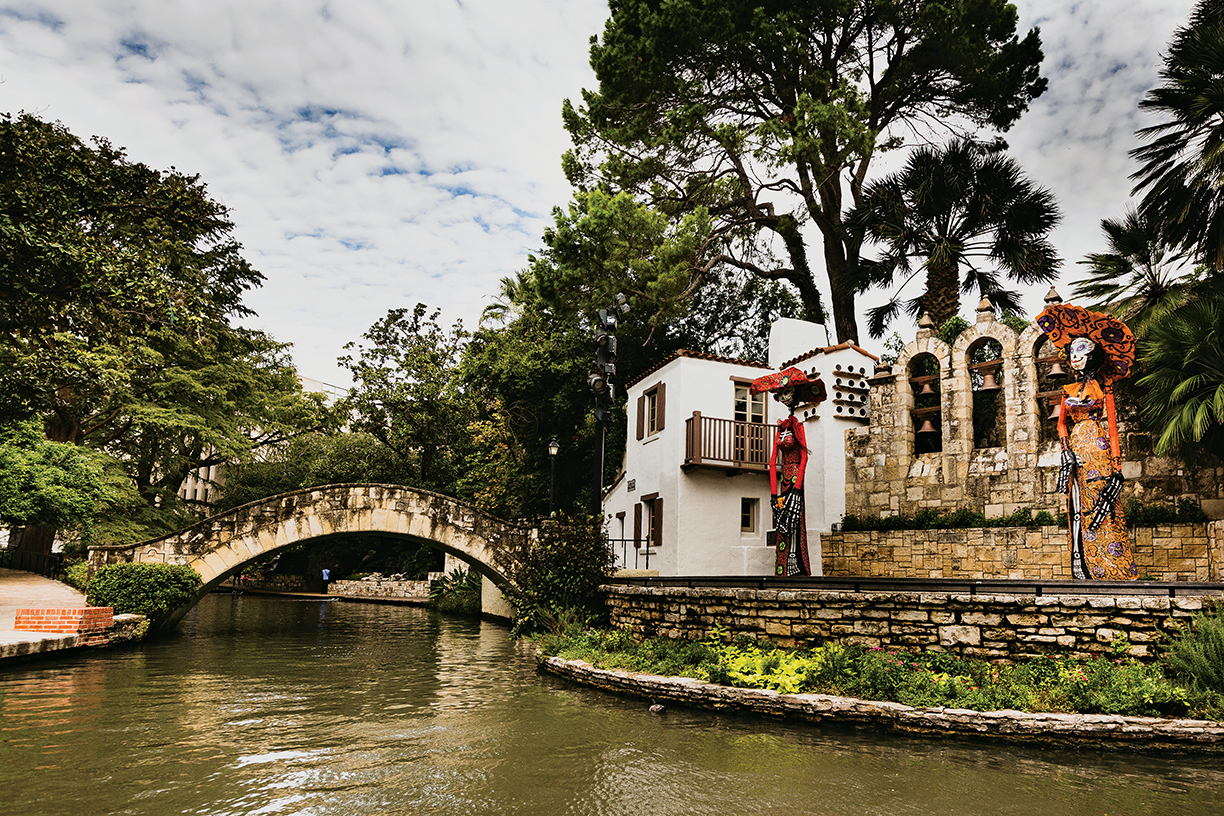
©istockphoto / TomasSereda
“I have traveled all over the world, but traveling back to San Antonio makes me more aware of its architectural history, and its many layers and textures.”
San Antonio, Texas, United States
First discovered by Spanish explorers in the 1600s, San Antonio’s identity has always been strongly rooted in Mexican culture, history, art and architecture. From exploring the city’s Spanish colonial past at the Alamo and other UNESCO World Heritage Missions to cruising along the San Antonio Riverwalk, those who travel to San Antonio will be deeply immersed in local culture.
Jane Martin — architecture educator, historian and resident of San Antonio — will lead her first trip with Architectural Adventures in 2019 in her hometown. “I have traveled all over the world, but traveling back to San Antonio makes me more aware of its architectural history, and its many layers and textures,” she says. “There is a lot to see in San Antonio, and I am constantly discovering new things. There are a great variety of architectural styles — with everything from Spanish Colonial, all the way to International Modern.”
Travelers will also visit Sir David Adjaye’s cutting-edge Ruby City, the newest of the city’s world-class museums, and learn about historic Pearl Brewery, now a 22-acre complex with housing, retail and fine dining. “I hope this trip helps to bring San Antonio to the world, encourages people to sign up for the tour and enjoy the city,” Martin says.
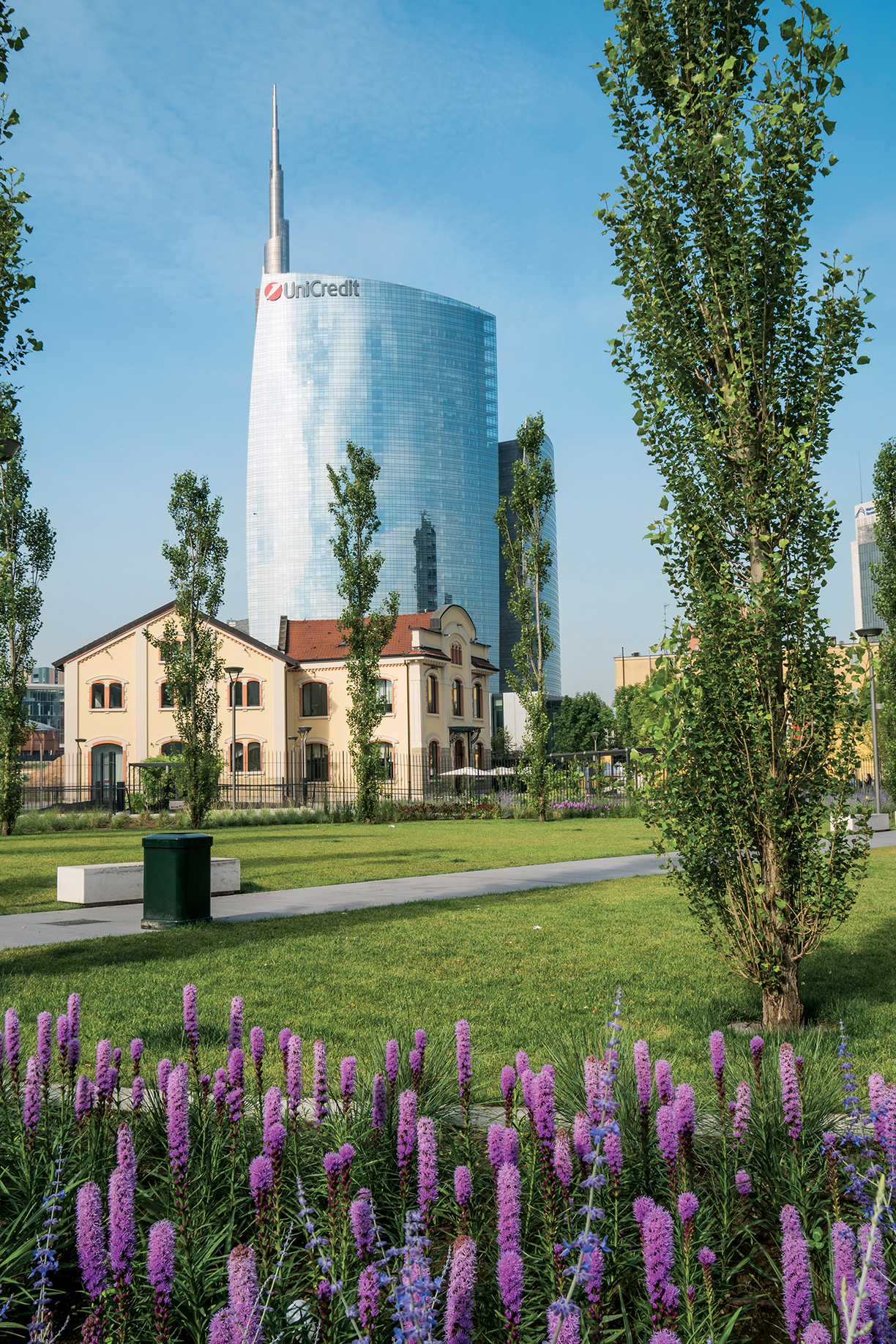
©istockphoto / Marco_Bonfanti
Milan, Italy
From marveling at Milan Cathedral, touring Santa Maria delle Grazie (home to Leonardo da Vinci’s Last Supper), to visiting the UniCredit Tower, those who travel to Milan will surely learn a great deal from Architecture Adventures expert David Rifkind.
Leading a nine-day tour in 2019, the architectural history professor and practicing architect will explore the city’s range of historic architecture, as well as its recent cultural renaissance — which led to the creation of new museums, sustainable architecture, and Contemporary art exhibits. “I was surprised to learn that architects tend to be very interested in Contemporary architecture,” notes Rifkind, who also finds that non-architects tend to be more interested in historic structures.
Rifkind’s trip to Milan will bring together a unique group of travelers, consisting of both architects and non-architects from around the globe. “The dynamic of the people on the trip really does impact the experience in a really positive way,” Rifkind says. “Experiencing architecture first-hand is a unique pleasure, and alongside a group of diverse people who share your passion is truly magical. It has been rewarding to learn how travelers experience places that I thought I understood.”
While Rifkind understands the importance of an informative lecture, he also highly values hands-on learning. “It is really fascinating when a relatively small group of people experience a city together,” says Rifkind, who made unique contributions for this trip to contrast classroom learning.
“Experiencing architecture first-hand is a unique pleasure, and alongside a group of diverse people who share your passion is truly magical.”

©istockphoto / Daniel_Keuck
“Although my studies will be very helpful, leading an Architectural Adventures tour will be a new experience for me. It will be very interesting to give tours to travelers who are already immersed in architecture.”
Morocco
From volunteering in Tunisia for the Peace Corp to lecturing at the University of Kabul in Afghanistan, Architectural Adventures expert Stanley Ira Hallet’s range of cultural experiences has prepared him to lead a tour throughout Morocco in 2019.
“Although my studies will be very helpful, leading an Architectural Adventures tour will be a new experience for me. It will be very interesting to give tours to travelers who are already immersed in architecture,” says Hallet. The trip will include visits to the Hassan II Mosque, the French-designed Habous Quarter, and the Majorelle Garden (a two-and-a-half-acre botanical garden).
Whether travelers are exploring the ancient capital of Mauretania, Volubilis, visiting the medieval school of Bouanania (which was built in the 1300s), or marveling at the Sahara Desert, Hallet says they will partake in a “completely different urban experience.”
Hallet, who also has a passion for photography, hopes the trip will offer travelers a more complete story of Morocco.
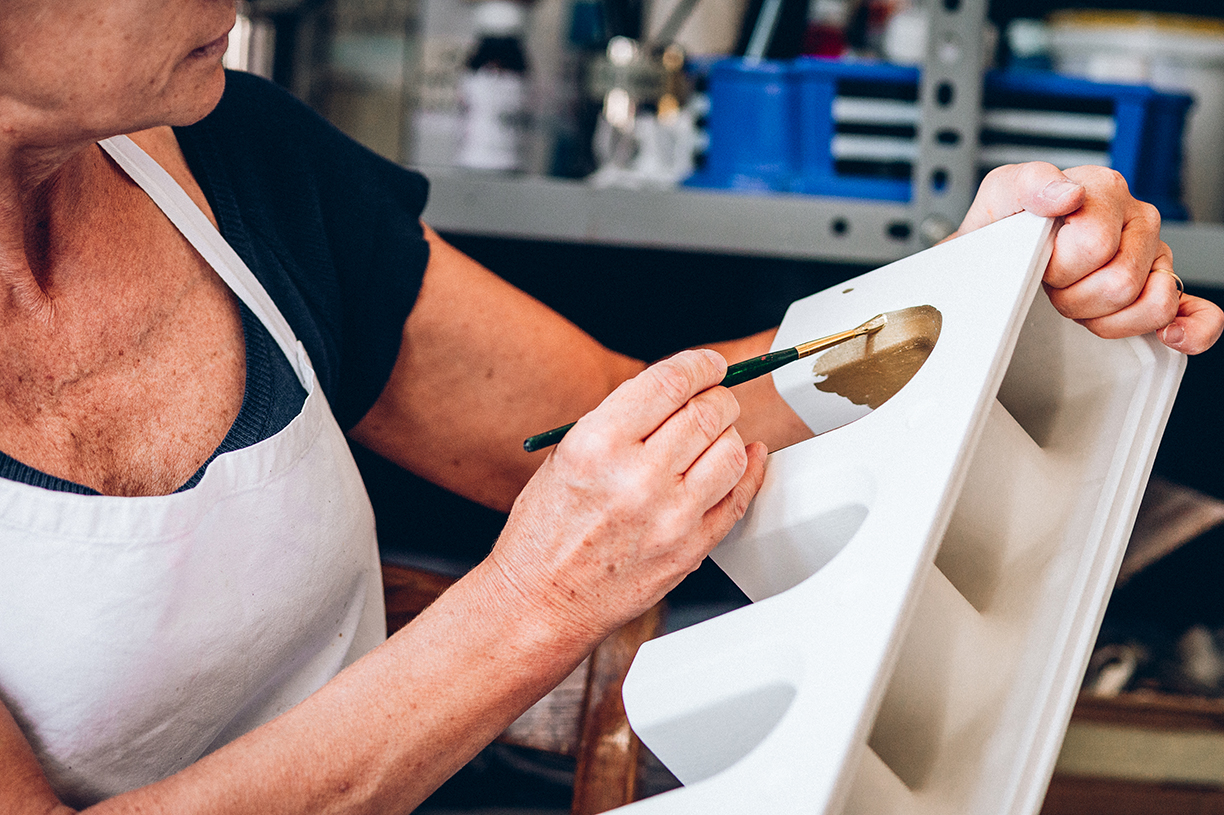
Photo by Giacomo Maestri.
New design brand LATOxLATO, founded by the young architects Francesco Breganze de Capnist and Virginia Valentini, presents its first collection of furnishings and objects that strives to tell a story of true passion for Italian design. Exclusively made in Italy, LATOxLATO uses the finest materials and refined techniques, all built on a search for the best artisans and craftspeople.
“LATOxLATO comes from the wish of bringing the artisans’ knowledge passed down across generations to the public,” say designers Breganza de Capnist and Valentini, “and make people realize that in Italy we still have a great tradition of true masters of the art that mold one piece at a time with their hands … Our mission is to show the consumer everyday objects in a different way from the one they are used to seeing them, freed from the constraints of the usual trends through the constant dialogue between art, aesthetics and functionality.”
The duo is usually inspired by day to day life, taking their personal memories as well as the architecture of Italy and transposing generalized design concepts into household pieces. For those looking to outfit their home, both designers say that these pieces help to “tell a story about [the] owner.”
“Each product has a unique and recognizable identity and is meant to embellish its new home and also bring value to its new owner. The goal is to give the consumer the chance to own a very unique piece that tells a story about him, what he likes and what are his dreams.”
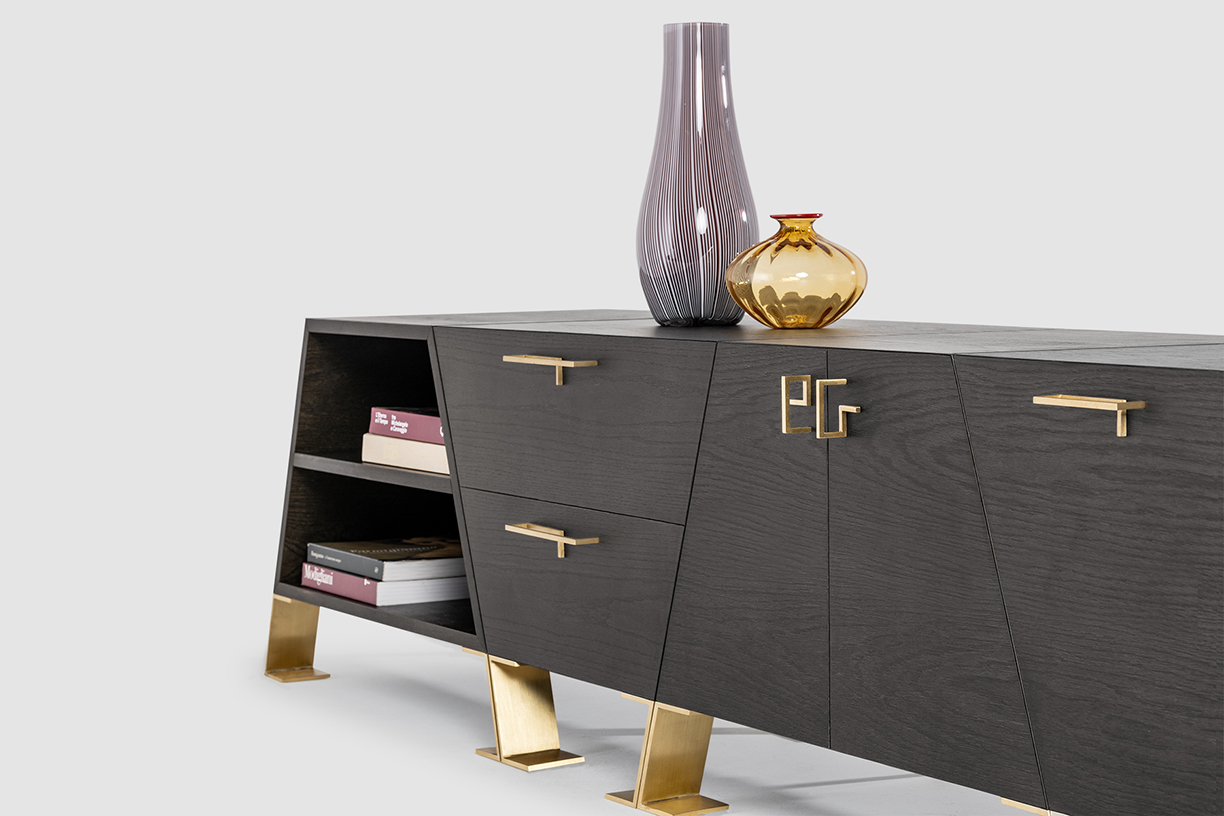
There are several pieces in the collection, varying in look and purpose. The Fourmosa storage chest draws on the clean formal lines of classic Italian design from the 1950s, updated for the modern age.
The piece is in varnished oak, with masterfully carved sharp edges bringing a sense of continuity to the surface. Designed to fit together in infinite combinations, these pieces create a dynamic, personalized piece that can even be expanded over time.
The trapezoidal modules easily lend themselves to various free combinations, without the use of joints.
Photo by Matteo Imbriani.
1950s design also provided inspiration for Aracne, an unconventional coffee table with an unexpected eight-legged silhouette. Its round glass top seems to float atop the elegant zoomorphic structure, solid and airy at the same time.
Its eight wooden supports, with rounded edges that allow the top to nestle into place with a natural elegance, create an evocative visual rhythm, interacting with its surroundings by projecting delicate threads of shadow into the light.
Precise woodworking and organic design make Aracne an elegant presence full of personality.
Photo by Giacomo Maestri.
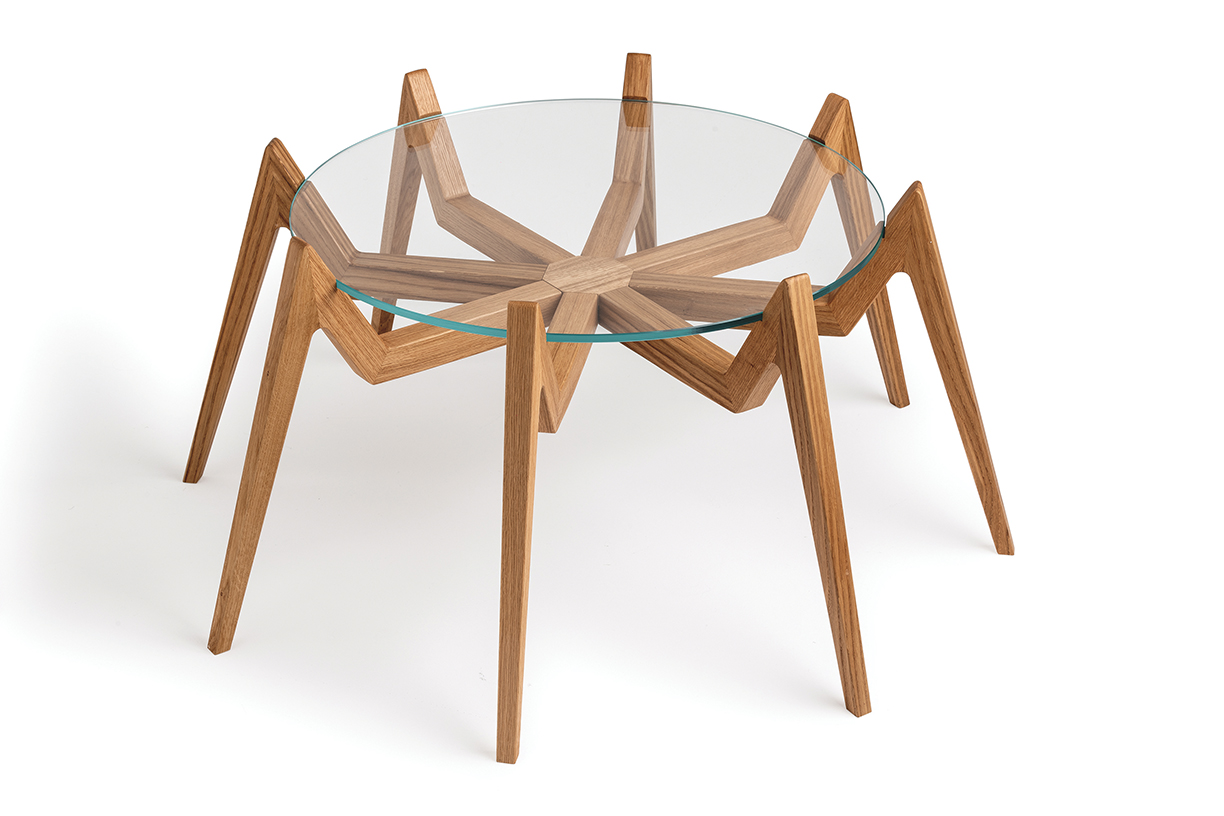
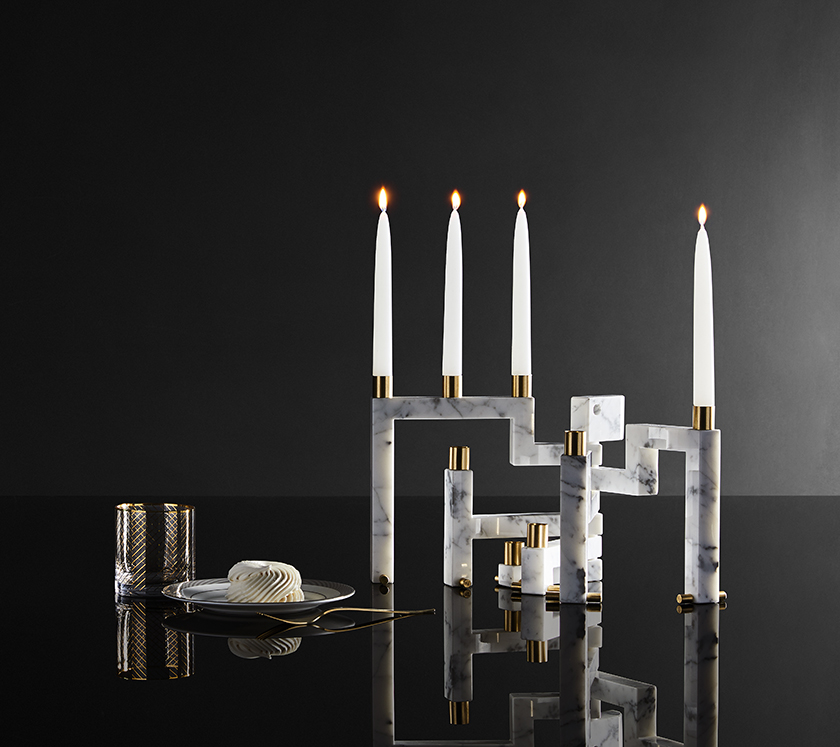
Candleholders, vases and a centerpiece are a tribute to the Italian art and architecture that inspires their form and character.
The Vestalia candleholder boasts the natural elegance of the most precious marbles, from Carrara White to Carnico Gray and Imperial Green.
A complex process of water-jet carving, entrusted to historic Venetian ateliers, brings out the stone’s edges and veining.
Their design, rich in tactile emotions and interactive possibilities, makes them objects of compelling sculptural presence.
Photo by Matteo Imbriani.

The arched ceramic vases Marcello, Massimo and Vittorio offer a subtle allusion to Italy’s Palladian villas and palaces and to the perspectives of Metaphysical art.
The detailing in precious 24k gold or platinum creates reflections of light and motion in perspective.
The pure white of the surface showcases the precious glaze finish and the imperceptible differences in intensity that come from handmade artistry.
Left photo: Marcello; Right photo: Massimo
Both photos by Giacomo Maestri.
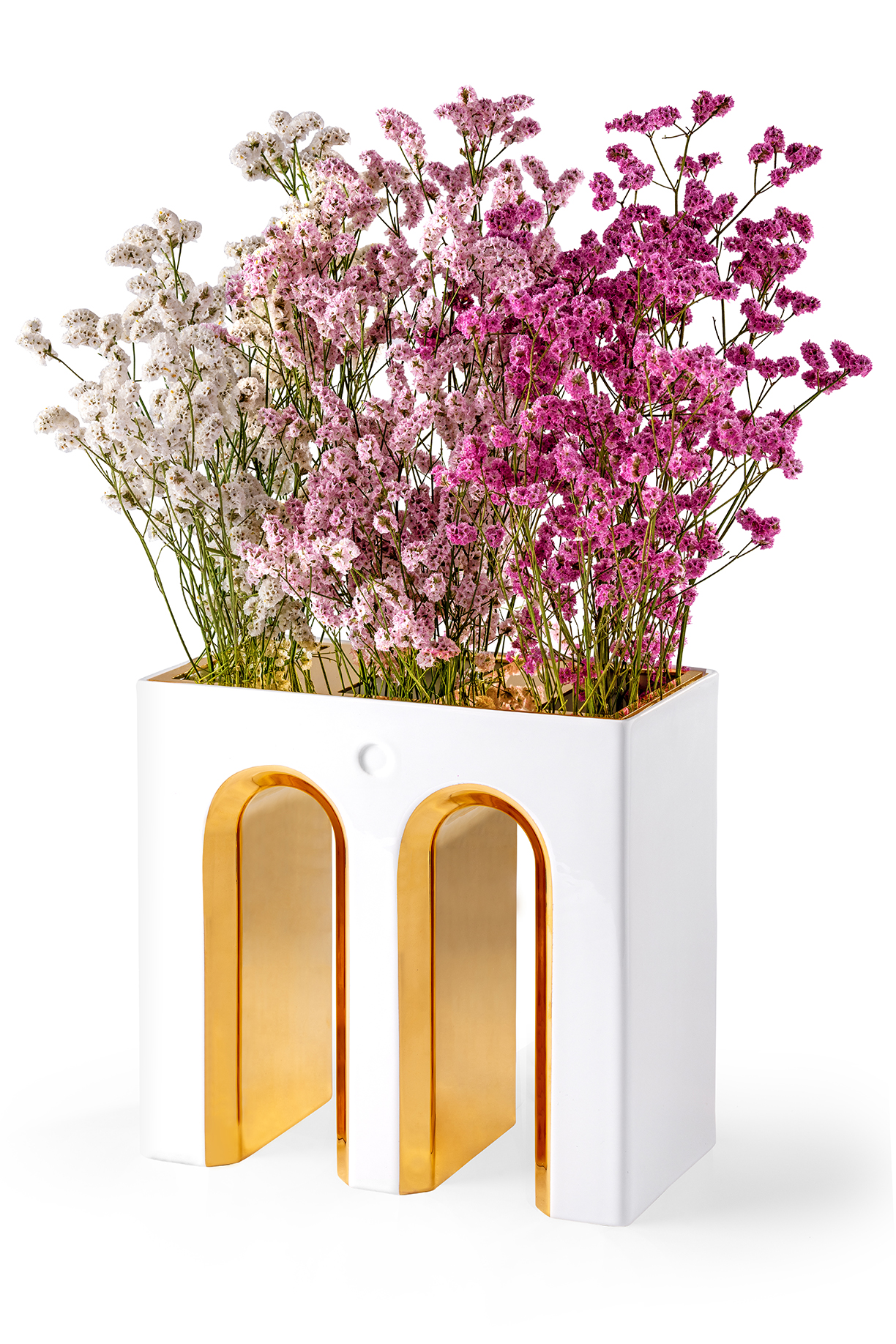
The beauties of artisanal ceramic return in the Sophia table centerpiece, inspired by the great piazzas of the città d’arte, Italy’s “Cities of Art.”
A meticulous study in proportion, Sophia presents itself as a scale model of the arches and porticoes of Renaissance architecture.
The result is an abstract geometric form, rich in sensory character and vibrant with luminous details that enrich the pure white of the ceramic.
Photo by Matteo Imbriani.
